Forums
- Forums
- Axis And Allies Forum
- General Discussion
- Aviation News
Aviation News
Post a reply
- Go to Previous topic
- Go to Next topic
- Go to Welcome
- Go to Introduce Yourself
- Go to General Discussion
- Go to Screenshots, Images and Videos
- Go to Off topic
- Go to Works in Progress
- Go to Skinning Tips / Tutorials
- Go to Skin Requests
- Go to IJAAF Library
- Go to Luftwaffe Library
- Go to RAF Library
- Go to USAAF / USN Library
- Go to Misc Library
- Go to The Ops Room
- Go to Made in Germany
- Go to Campaigns and Missions
- Go to Works in Progress
- Go to Juri's Air-Raid Shelter
- Go to Campaigns and Missions
- Go to Works in Progress
- Go to Skinpacks
- Go to External Projects Discussion
- Go to Books & Resources
-
 Main AdminU.S. Air Force Airmen assigned to the 402nd Aircraft Maintenance Group prepare a decommissioned F-15C Eagle assigned to the 125th Fighter Wing for shipment to the "Boneyard" during a TDY to Jacksonville Air National Guard Base, Florida, Jan. 29, 2024. The 402nd AMXG provides Programmed Depot Maintenance for the F-15 airframe and is responsible for the repair, modification, reclamation and rework of more than 200 aircraft worldwide. This departure will represent another step in the 125th Fighter Wing's divesture of the F-15C Eagle airframe as it prepares to receive the first batch of F-35 Lightning II aircraft in early 2025. The arrival of the F-35 will equip the wing with the Air Force's most sophisticated fifth-generation fighter, will posture Airmen to meet air superiority and global strike needs for our nation's defense, and will mark the end of the wing's 30-year era flying F-15 fighter jets. Conversion training and infrastructure changes are currently underway to prepare Airmen for the change in mission. (U.S. Air National Guard photo by Staff Sgt. Jacob Hancock)
Main AdminU.S. Air Force Airmen assigned to the 402nd Aircraft Maintenance Group prepare a decommissioned F-15C Eagle assigned to the 125th Fighter Wing for shipment to the "Boneyard" during a TDY to Jacksonville Air National Guard Base, Florida, Jan. 29, 2024. The 402nd AMXG provides Programmed Depot Maintenance for the F-15 airframe and is responsible for the repair, modification, reclamation and rework of more than 200 aircraft worldwide. This departure will represent another step in the 125th Fighter Wing's divesture of the F-15C Eagle airframe as it prepares to receive the first batch of F-35 Lightning II aircraft in early 2025. The arrival of the F-35 will equip the wing with the Air Force's most sophisticated fifth-generation fighter, will posture Airmen to meet air superiority and global strike needs for our nation's defense, and will mark the end of the wing's 30-year era flying F-15 fighter jets. Conversion training and infrastructure changes are currently underway to prepare Airmen for the change in mission. (U.S. Air National Guard photo by Staff Sgt. Jacob Hancock)
A U.S. Air Force F-16 Fighting Falcon from the 510th Fighter Squadron takes off during Red Flag 24-1 at Nellis Air Force Base, Nevada, Jan 25, 2024. Red Flag Nellis 24-1 provided unique training that emphasized preparing Airmen for high-end warfighting and strategic competition. (U.S. Air Force photo by Staff Sgt. Heather Ley)
An F-16C Fighting Falcon assigned to the 20th Fighter Wing, Shaw Air Force Base (AFB), takes off for Red Flag-Nellis 24-1 mission at Nellis Air Force Base, Nevada, Jan. 23, 2024. Red Flag is an opportunity to enhance the readiness and training necessary to respond as a joint force to any potential crisis or challenge across the globe. (U.S. Air Force photo by William R. Lewis)_takes_off_for_Red_Flag-Nellis_24-1_mission_at_Nellis_Air_Force_Base_Nevada_Jan._23_2024..jpg?width=1920&height=1080&fit=bounds)
An F-16C Fighting Falcon assigned to Aviano Air Base, Italy, takes off for Red Flag-Nellis 24-1 mission at Nellis Air Force Base, Nevada, Jan. 23, 2024. Red Flag is an opportunity to enhance the readiness and training necessary to respond as a joint force to any potential crisis or challenge across the globe. (U.S. Air Force photo by William R. Lewis)
An F-16C Fighting Falcon assigned to Aviano Air Base, Italy, takes off for Red Flag-Nellis 24-1 mission at Nellis Air Force Base, Nevada, Jan. 23, 2024. These exercises build partnerships and interoperability among our allies and across domains. This Red Flag will provide more complex realistic scenarios concentrated on warfighting in the Indo-Pacific theater. (U.S. Air Force photo by William R. Lewis)
Royal Air Force FGR-4 Typhoons take off at Nellis Air Force Base, Nevada, Jan. 23, 2024. in preparation for Red Flag-Nellis 24-1. To date, more than 30 allies and coalition countries have participated in Red Flag-Nellis exercises. (U.S. Air Force photos by William R. Lewis)

An F-22 Raptor assigned to the 3rd Wing, Joint Base Elmendorf-Richardson, Alaska, takes off for Red Flag-Nellis 24-1 mission at Nellis Air Force Base, Nevada, Jan. 23, 2024. These exercises build partnerships and interoperability among our allies and across multiple domains. Red Flag exercises provide aircrews the experience of multiple, intensive air combat sorties in the safety of a training environment. (U.S. Air Force photo by William R. Lewis)
A Royal Australian Air Force (RAAF) F-35 Typhoon takes off for Red Flag-Nellis 24-1 mission at Nellis Air Force Base, Nevada, Jan. 23, 2024. These exercises build partnerships and interoperability among our allies and across domains. This Red Flag will provide more complex realistic scenarios concentrated on warfighting in the Indo-Pacific theater. (U.S. Air Force photo by William R. Lewis)
A U.S. Navy EA-18G Growler assigned to Naval Air Station Whidbey Island, Washington, takes off for a Red Flag 24-1 mission at Nellis Air Force Base, Nevada, Jan. 25, 2024. To date, more than 30 allies and coalition countries have participated in Red Flag-Nellis exercises. (U.S. Air Force photo by William R. Lewis)
An F-22 Raptor assigned to the 3rd Wing, Joint Base Elmendorf-Richardson, Alaska, takes off for Red Flag-Nellis 24-1 mission at Nellis Air Force Base, Nevada, Jan. 25, 2024. These exercises build partnerships and interoperability among our allies and across multiple domains. Red Flag exercises provide aircrews the experience of multiple, intensive air combat sorties in the safety of a training environment. (U.S. Air Force photo by William R. Lewis)
An F-16C Fighting Falcon assigned to the 64th Aggressor Squadron, Nellis Air Force Base Nev., takes off for Red Flag-Nellis 24-1 mission at Nellis Air Force Base, Nevada, Jan. 25, 2024. These exercises build partnerships and interoperability among our allies and across multiple domains. Red Flag exercises provide aircrews with the experience of multiple, intensive air combat sorties in the safety of a training environment. (U.S. Air Force photo by William R. Lewis)
An F-15E Strike Eagle assigned to the 4th Fighter Wing, Seymour Johnson Air Force Base, North Carolina, takes off for Red Flag-Nellis 24-1 mission at Nellis Air Force Base, Nevada, Jan. 25, 2024. Red Flag is an opportunity to enhance the readiness and training necessary to respond as a joint force to any potential crisis or challenge across the globe. (U.S. Air Force photo by William R. Lewis)
An F-16C Fighting Falcon assigned to Aviano Air Base, Italy, takes off for Red Flag-Nellis 24-1 mission at Nellis Air Force Base, Nevada, Jan. 25, 2024. These exercises build partnerships and interoperability among our allies and across domains. This Red Flag will provide more complex realistic scenarios concentrated on warfighting in the Indo-Pacific theater. (U.S. Air Force photo by William R. Lewis)
A Royal Australian Air Force pilot waits for clearance to taxi to conduct a sortie during Red Flag Nellis 24-1 at Nellis Air Force Base, Nevada, Jan. 23, 2023. F-35s from the RAAF and various aircraft from the 53rd Wing, conducted interoperability training to evaluate capabilities in a realistic training environment. These exercises build partnerships and interoperability among our allies and across domains. This Red Flag will provide more complex realistic scenarios concentrated on warfighting in the Indo-Pacific theater. (U.S. Air Force photo by Master Sgt. Alexandre Montes)
SYRACUSE, N.Y. Jan. 29, 2024 – Lockheed Martin (NYSE: LMT), under contract to Northrop Grumman for the U.S. Navy’s E-2D Advanced Hawkeye, has delivered the 75th APY-9 radar that provides the U.S. Navy with information dominance through revolutionary sensor capability. More Hawkeyes have been built and delivered than any other AEW platform in the world.
“As the primary sensor for the E-2D, the APY-9 radar has a long legacy of providing agile deterrence for enhanced 21st century security,” stated Chandra Marshall, vice president of Lockheed Martin’s Radar & Sensor Systems business. “Our primary focus is to bring our military men and women home safely, and the APY-9 sets that bar for all other AEW radars.”
The newest Advanced Hawkeye variant is at the forefront of technological capability, due in large part to Lockheed Martin’s APY-9 radar. The Northrop Grumman-built E-2 has come to be known as the U.S. Navy’s “eyes of the fleet” because of its ability to simultaneously watch over air, land and sea. Any time a Navy carrier has aircraft airborne, there is an APY-9 radar at work, guarding the United States and its allies.
On Time and On Task
The U.S. Navy has funded 80 out of 86 aircraft in the current program of record. Japan has purchased 18 E-2D Hawkeyes and France has purchased three. With U.S. and international demand, the APY-9 is expected to be in production into the late 2020s, and in modernization and sustainment well into the 2040s.
Lockheed Martin has been a collaborator on the Northrop Grumman-built E-2D for over two decades. The E-2D Advanced Hawkeye platform delivers critical, actionable data to enable decision dominance for joint forces and first responders. These advances provide militaries with the necessary situational awareness to shorten the time between initial awareness and active engagement.
Proven Radar Experience
With broad and deep experience developing and delivering advanced radar solutions to customers, Lockheed Martin’s high-performing, high-reliability radar systems specialize in advanced early warning, counter target acquisition, situational awareness and integrated air and missile defense. Lockheed Martin radars are designed with a high degree of commonality, are available in highly mobile configurations, operate in all environments and are deployed worldwide. It’s why Lockheed Martin’s radars are the choice of more than 45 nations on six continents.
For additional information, visit our website: www.lockheedmartin.com/radar
At the end of January, two Belgian F-16 , a Lithuanian C-27J and two French Mirage 2000-5 conducted a joint flight as part of surveillance and air defense missions on the eastern flank of Europe.
These manoeuvres aim to strengthen the interoperability between our air forces as well as to improve the operational level of crews, thus contributing to ensuring the safety and integrity of the Baltic airspace.
Placed under NATO operational control and carried out in cooperation with allies present in the European sky, these missions demonstrate the interoperability and cohesion of Alliance members.
(Photos courtesy of the Armée de l'Air et de l'Espace )
-
 Main AdminA B-2 Spirit prepares to take-off from Nellis Air Force Base, Nev. during Bamboo Eagle, Jan. 29, 2024. Bamboo Eagle provides Airmen, allies, and partners with a multidimensional, combat-representative battle-space to conduct advanced training in support of U.S. national interests. (U.S. Air Force photo by Senior Airman Bryson Britt)
Main AdminA B-2 Spirit prepares to take-off from Nellis Air Force Base, Nev. during Bamboo Eagle, Jan. 29, 2024. Bamboo Eagle provides Airmen, allies, and partners with a multidimensional, combat-representative battle-space to conduct advanced training in support of U.S. national interests. (U.S. Air Force photo by Senior Airman Bryson Britt)
The United States Air Force Air Demonstration “Thunderbirds” conduct a winter training session during Falcon Rejoin 50, Jan. 25, 2024, at Edwards Air Force Base, California. Multiple F-16s Fighting Falcons from units around the nation descended upon Edwards to partake in the celebration of the F-16's first flight.
(Photo by Christian Raterman)
Air Combat Command F-16 Viper Demonstration Team pilot Capt. Aimee Fiedler taxis during Falcon Rejoin 50, Jan. 25, 2024, at Edwards Air Force Base, California.
(Photo by Madeline Guadarrama)
The Republic of Singapore Air Force F-16 Fighting Falcon heritage jet is parked at the main ramp of Edwards Air Force Base, California, Jan. 25, 2024, during Falcon Rejoin 50. Multiple F-16s Fighting Falcons from units around the nation descended upon Edwards to partake in the celebration of the F-16's first flight, which happend 50 years ago on Jan. 20, 1974.
(Photo by James West)
A U.S. Air Force F-15E Strike Eagle taxis down the flight line at Seymour Johnson Air Force Base, North Carolina, Jan. 22, 2024. The 4th Fighter Wing performs flight line operations to reinforce tactical and strategic capabilities to prepare for homeland defense missions and world-wide deployments.(U.S. Air Force photo by Senior Airman Sabrina Fuller-Judd)
An F-16 Fighting Falcon assigned to the 416th Flight Test Squadron, 412th Test Wing, flies over Edwards Air Force Base, California, during Falcon Rejoin 50, Jan. 25, 2024. Falcon Rejoin 50 celebrated the 50th anniversary of the first flight of the YF-16 on Jan. 20, 1974.
(Photo by: Kyle Brasier)
-
 Main AdminA B-52H Stratofortress taxis towards the runway at Minot Air Force Base, North Dakota, Jan. 30, 2024. The bomber is capable of flying at high subsonic speeds at altitudes of up to 50,000 feet for more than 8,800 miles. (U.S. Air Force photo by Senior Airman Alexander Nottingham)
Main AdminA B-52H Stratofortress taxis towards the runway at Minot Air Force Base, North Dakota, Jan. 30, 2024. The bomber is capable of flying at high subsonic speeds at altitudes of up to 50,000 feet for more than 8,800 miles. (U.S. Air Force photo by Senior Airman Alexander Nottingham)
A B-52 Stratofortress assigned to the 69th Bomb Squadron taxis down the flightline at Minot Air Force Base, North Dakota, Jan. 30, 2024. The 69th Bomb Squadron plays a critical role in the 5th Bomb Wing’s mission to provide global strike and combat capabilities to geographic commanders across the globe. (U.S. Air Force photo by 2nd Lieutenant Casen Salitore)
F-15E Strike Eagles, assigned to Seymour Johnson Air Force Base, N.C., depart Nellis Air Force Base, NV, January 29, 2024. The F-15E Strike Eagle is an all-weather, extremely maneuverable, tactical fighter designed to permit the Air Force to gain and maintain air supremecy over the battlefield. (U.S. Air Force photo by Staff Sgt. Sean Martin)
PHILIPPINE SEA (Jan. 30, 2024) An EA-18G Growler, assigned to the “Gauntlets” of Electronic Attack Squadron (VAQ) 136, launches from the flight deck of Nimitz-class aircraft carrier USS Carl Vinson (CVN 70) during Multi-Large Deck Event (MLDE). The event comprising Carl Vinson Carrier Strike Group, Theodore Roosevelt Carrier Strike Group and the Japan Maritime Self-Defense Force is designed to advance combined readiness between Japan and U.S maritime forces while simultaneously demonstrating our commitment to our partners and allies in the Indo-Pacific. Vinson, assigned to Carrier Strike Group ONE, is deployed to the U.S. 7th Fleet area of operations in support of a free and open Indo-Pacific. (U.S. Navy photo by Mass Communication Specialist 3rd Class Joshua Sapien)_136_launches_from_the_flight_deck_of_Nimitz-class_aircraft_carrier_USS_Carl_Vinson.jpg?width=1920&height=1080&fit=bounds)
PHILIPPINE SEA (Jan. 31, 2024) From left to right, Nimitz-class aircraft carrier USS Carl Vinson (CVN 70), Arleigh Burke-class guided-missile destroyer USS Sterett (DDG 104), Ticonderoga-class guided-missile cruiser USS Princeton (CG 59), Hyuga-class helicopter destroyer JS Ise (DDH 182), Arleigh Burke-class guided-missile destroyer USS Rafael Peralta (DDG 115), Arleigh Burke-class guided-missile destroyer USS Daniel K. Inouye (DDG 118), Nimitz-class aircraft carrier USS Theodore Roosevelt (CVN 71) along with aircraft assigned to Carrier Airwing Two sail and fly in formation during Multi-Large Deck Event (MLDE), Jan. 31. The event comprising Carl Vinson Carrier Strike Group, Theodore Roosevelt Carrier Strike Group and the Japan Maritime Self-Defense Force is designed to advance combined readiness between Japan and U.S. maritime forces while simultaneously demonstrating our commitment to our partners and allies in the Indo-Pacific. Vinson, flagship of Carrier Strike Group ONE, is deployed to the U.S. 7th Fleet area of operation in support of a free and open Indo-Pacific. (U.S. Navy photo by Mass Communication Specialist 2nd Class Terrin Hartman)
A B-52H Stratofortress assigned to the 96th Bomb Squadron, Barksdale Air Force Base, La, awaits takeoff during Red Flag 24-1 at Nellis Air Force Base, Nevada January 25, 2023. Red Flag provides realistic combat training for aircrew in the safety of a training environment. (U.S. Air Force photo by Airman 1st Class Seth Watson)
U.S. Air Force Airmen assigned to the 525th Expeditionary Fighter Generation Squadron, Joint Base Elmendorf-Richardson, Alaska, prepare an F-22 Raptor from the 525th Expeditionary Fighter Squadron for takeoff in support of Exercise Bamboo Eagle 24-1 at Nellis Air Force Base, Nevada, Jan. 25, 2024. During Bamboo Eagle, warfighters will implement all-domain combat-power generation from disaggregated basing locations throughout the western part of the U.S., while incorporating scenarios in distributed command and control, agile logistics, and tactical air-to-air refueling. Airmen will also tackle agile combat employment, and the larger challenges of persistent logistics, by adapting techniques most often associated with special operations forces but on a much larger scale. (U.S. Air Force photo by Tech. Sgt. Curt Beach)
-
1 year agoThu Feb 01 2024, 08:58pmDuggy
 Main AdminA B-52 Stratofortress assigned to the 2nd Bomb Wing, Barksdale Air Force Base, Louisiana, performs an emergency disconnect maneuver from a KC-135 Stratotanker assigned to the 6th Air Refueling Wing, MacDill AFB, Florida, during an aerial refueling exercise over the Southern United States, Jan. 30, 2024. The mission of the 11th Bomber Squadron is to provide frontline units with the highest quality B-52 aviators capable of maintaining the highest standards of conduct and performance required to assume the nation’s special trust and responsibility for the world’s most powerful weapons. (U.S. Air Force photo by Senior Airman Jessica Do)
Main AdminA B-52 Stratofortress assigned to the 2nd Bomb Wing, Barksdale Air Force Base, Louisiana, performs an emergency disconnect maneuver from a KC-135 Stratotanker assigned to the 6th Air Refueling Wing, MacDill AFB, Florida, during an aerial refueling exercise over the Southern United States, Jan. 30, 2024. The mission of the 11th Bomber Squadron is to provide frontline units with the highest quality B-52 aviators capable of maintaining the highest standards of conduct and performance required to assume the nation’s special trust and responsibility for the world’s most powerful weapons. (U.S. Air Force photo by Senior Airman Jessica Do)
A KC-135 Stratotanker assigned to the 6th Air Refueling Wing, MacDill Air Force Base, Florida performs aerial refueling with a B-52 Stratofortress assigned to the 2nd Bomb Wing, Barksdale AFB, Louisiana, over the Southern United States, Jan. 30, 2024. The mission of the 11th Bomber Squadron is to provide frontline units with the highest quality B-52 aviators capable of maintaining the highest standards of conduct and performance required to assume the nation’s special trust and responsibility for the world’s most powerful weapons. (U.S. Air Force photo by Senior Airman Jessica Do)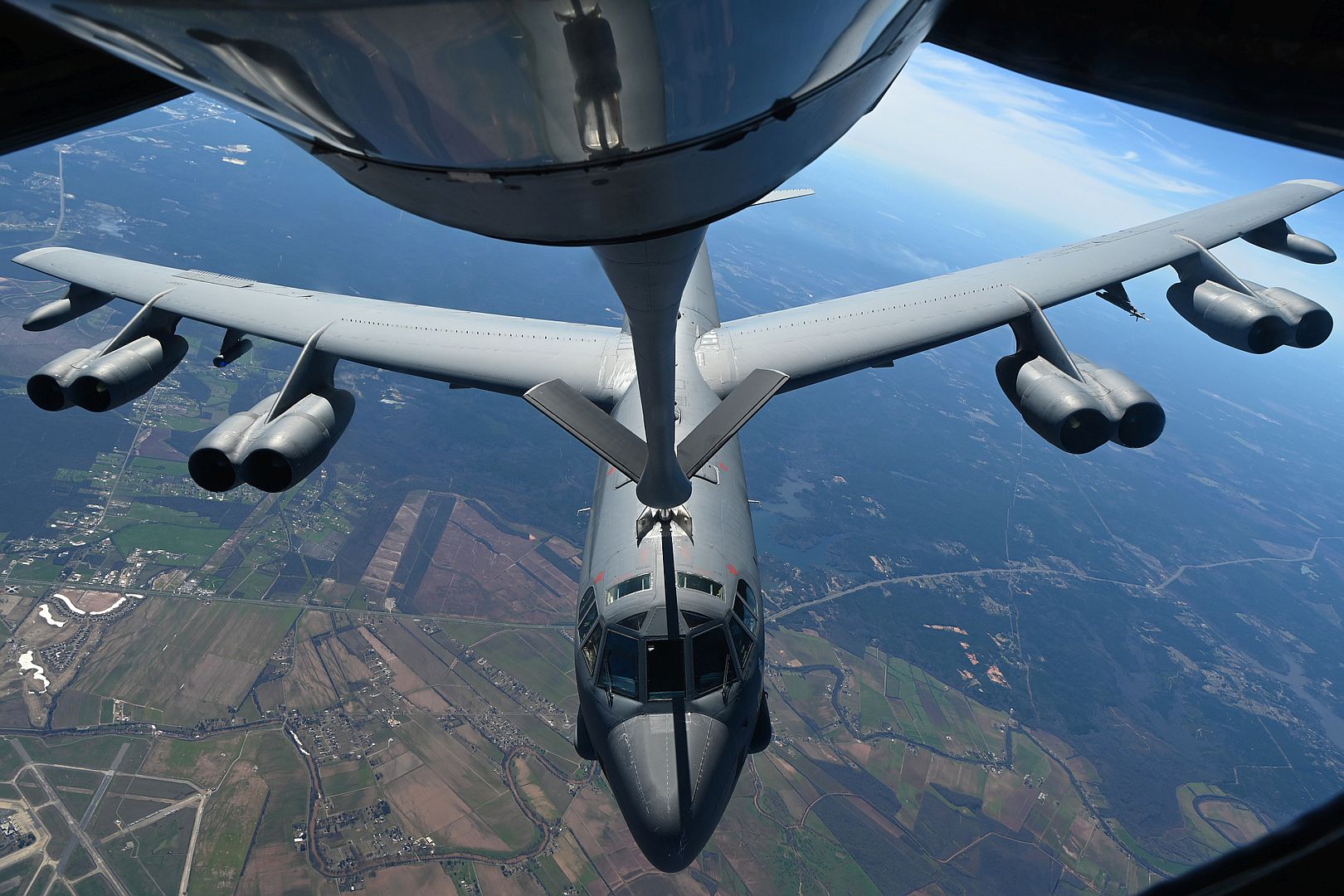
A Lockheed Martin F-16A assigned to Top Aces Corporation flies on Jan. 26, 2024 over Tucson, Arizona. Top Aces is a defense company that provides Red Air support for the 56th Fighter Wing. Red Air is a term used to refer to aircraft acting as aggressors in air-to-air combat training missions. Through the use of Red Air contractors, the Air Force is able to simulate large scale arial combat sorties providing advanced levels of training for its pilots. (U.S. Air Force photo by Airman 1st Class Elias Carrero)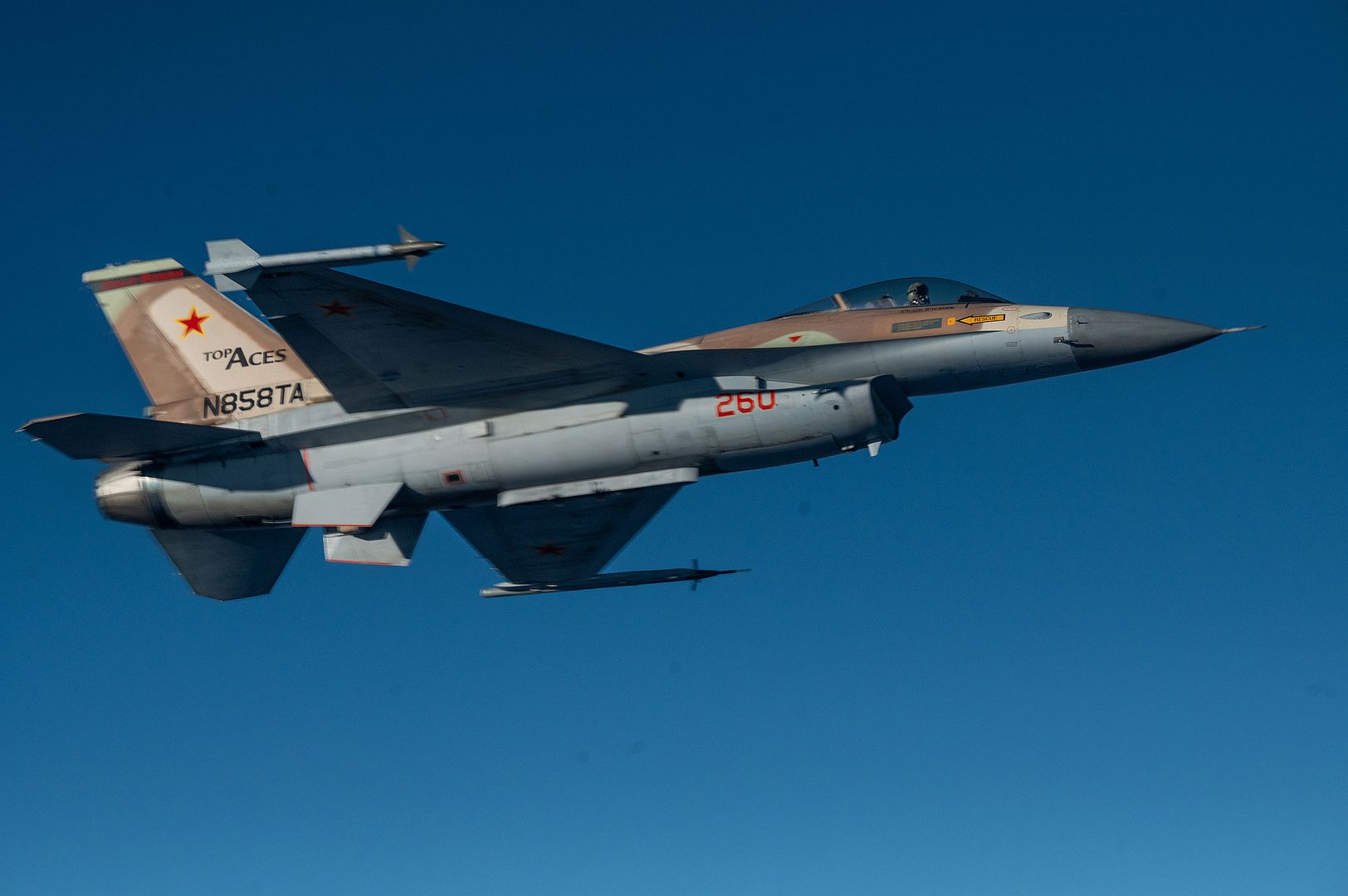
An F-35A Lightning II assigned to the 388th Fighter Wing, out of Hill Air Force Base, Utah, taxis during the inaugural Bamboo Eagle exercise at Edwards Air Force Base, CA., Jan 29, 2024. Bamboo Eagle provides Airmen, allies, and partners with a multidimensional, combat-representative battle-space to conduct advanced training in support of U.S. national interests.
(Photo by Harley Huntington)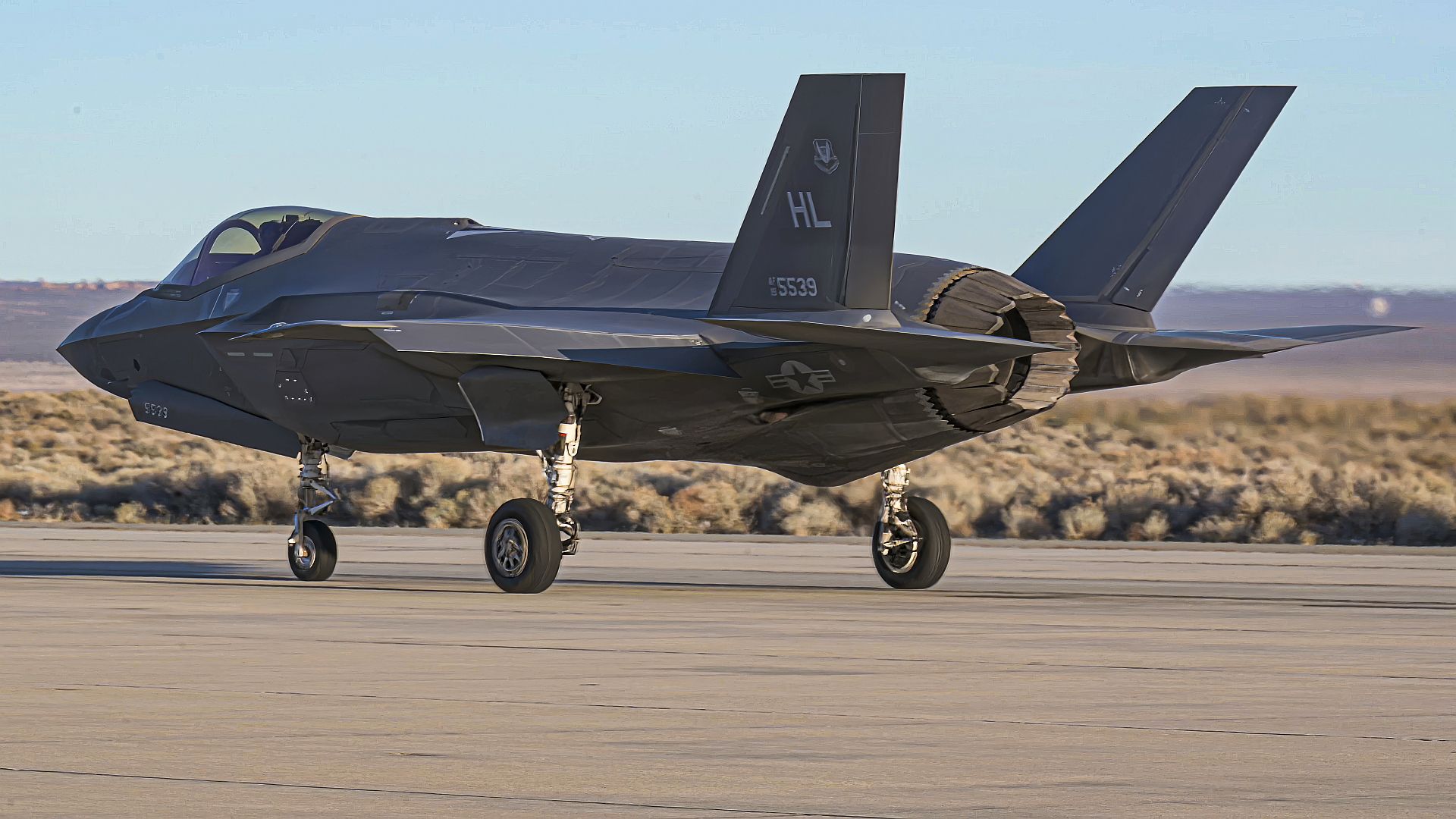
-
 Main AdminF-35A Lightning II's assigned to the 388th Fighter Wing, out of Hill Air Force Base, Utah, are readied for a training sortie during the inaugural Bamboo Eagle exercise at Edwards Air Force Base, CA., Jan 29, 2024. Bamboo Eagle provides Airmen, allies, and partners with a multidimensional, combat-representative battle-space to conduct advanced training in support of U.S. national interests.
Main AdminF-35A Lightning II's assigned to the 388th Fighter Wing, out of Hill Air Force Base, Utah, are readied for a training sortie during the inaugural Bamboo Eagle exercise at Edwards Air Force Base, CA., Jan 29, 2024. Bamboo Eagle provides Airmen, allies, and partners with a multidimensional, combat-representative battle-space to conduct advanced training in support of U.S. national interests.
(Photos by Sgt. Nicolas Cholula)

PHILIPPINE SEA (Jan. 31, 2024 An F-35C Lightning II, assigned to the “Warhawks” of Strike Fighter Squadron (VFA) 97, flies over the Nimitz-class aircraft carrier USS Theodore Roosevelt (CVN 71) during a Multi-Large Deck Event (MLDE), Jan. 31, 2024. The event comprising Carl Vinson Carrier Strike Group, Theodore Roosevelt Carrier Strike Group and the Japan Maritime Self-Defense Force is designed to advance combined readiness between Japan and U.S. maritime forces while simultaneously demonstrating our commitment to our partners and allies in the Indo-Pacific. (U.S. Navy photo by Mass Communication Specialist 3rd Class Adina Phebus)_97_flies_over_the_Nimitz-class_aircraft_carrier_USS_Theodore_Roosevelt.jpg?width=1920&height=1080&fit=bounds)
PHILIPPINE SEA (Jan. 31, 2024) An F-35C Lightning II, assigned to the “Warhawks” of Strike Fighter Squadron (VFA) 97, lands on the flight deck of the Nimitz-class aircraft carrier USS Theodore Roosevelt (CVN 71) during a Multi-Large Deck Event (MLDE), Jan. 31, 2024. The event comprising Carl Vinson Carrier Strike Group, Theodore Roosevelt Carrier Strike Group and the Japan Maritime Self-Defense Force is designed to advance combined readiness between Japan and U.S. maritime forces while simultaneously demonstrating our commitment to our partners and allies in the Indo-Pacific. (U.S. Navy photo by Mass Communication Specialist 3rd Class Adina Phebus)_97_lands_on_the_flight_deck_of_the_Nimitz-class_aircraft_carrier_USS_Theodore_Roosevelt.jpg?width=1920&height=1080&fit=bounds)
PHILIPPINE SEA (Jan. 31, 2024) U.S. Sailors prepare refuel an F-35C Lightning II, assigned to the “Warhawks” of Strike Fighter Squadron (VFA) 97, on the flight deck of the Nimitz-class aircraft carrier USS Theodore Roosevelt (CVN 71) during a Multi-Large Deck Event (MLDE), Jan. 31, 2024. The event comprising Carl Vinson Carrier Strike Group, Theodore Roosevelt Carrier Strike Group and the Japan Maritime Self-Defense Force is designed to advance combined readiness between Japan and U.S. maritime forces while simultaneously demonstrating our commitment to our partners and allies in the Indo-Pacific. (U.S. Navy photo by Mass Communication Specialist 3rd Class Adina Phebus)_97_on_the_flight_deck_of_the_Nimitz-class_aircraft_carrier_USS_Theodore_Roosevelt.jpg?width=1920&height=1080&fit=bounds)
PHILIPPINE SEA (Jan. 31, 2024) An F-35C Lightning II, assigned to the “Warhawks” of Strike Fighter Squadron (VFA) 97, launches off the flight deck of the Nimitz-class aircraft carrier USS Theodore Roosevelt (CVN 71) during a Multi-Large Deck Event (MLDE), Jan. 31, 2024. The event comprising Carl Vinson Carrier Strike Group, Theodore Roosevelt Carrier Strike Group and the Japan Maritime Self-Defense Force is designed to advance combined readiness between Japan and U.S. maritime forces while simultaneously demonstrating our commitment to our partners and allies in the Indo-Pacific. (U.S. Navy photo by Mass Communication Specialist 3rd Class Adina Phebus)_97_launches_off_the_flight_deck_of_the_Nimitz-class_aircraft_carrier_USS_Theodore_Roosevelt.jpg?width=1920&height=1080&fit=bounds)
PACIFIC OCEAN (Jan. 31, 2024) An F/A-18E Super Hornet, assigned to Strike Fighter Squadron (VFA) 151, taxis on the flight deck of the Nimitz-class aircraft carrier USS Abraham Lincoln (CVN 72). The Abraham Lincoln Carrier Strike Group is underway in the U.S. 3rd Fleet area of operations conducting advanced tactical training that increases warfighting capability and tactical proficiency across all domains. (U.S. Navy photo by Mass Communication Specialist 2nd Class Han A. Puyu)_151_taxis_on_the_flight_deck_of_the_Nimitz-class_aircraft_carrier_USS_Abraham_Lincoln.jpg?width=1920&height=1080&fit=bounds)
PACIFIC OCEAN (Jan. 31, 2024) An F/A-18E Super Hornet, assigned to Strike Fighter Squadron (VFA) 151, launches from the flight deck of the Nimitz-class aircraft carrier USS Abraham Lincoln (CVN 72). The Abraham Lincoln Carrier Strike Group is underway in the U.S. 3rd Fleet area of operations conducting advanced tactical training that increases warfighting capability and tactical proficiency across all domains. (U.S. Navy photo by Mass Communication Specialist 2nd Class Han A. Puyu)_151_launches_from_the_flight_deck_of_the_Nimitz-class_aircraft_carrier_USS_Abraham_Lincoln.jpg?width=1920&height=1080&fit=bounds)
PACIFIC OCEAN (Jan. 31, 2024) An F/A-18F Super Hornet, assigned to Strike Fighter Squadron (VFA) 41, taxis on the flight deck of the Nimitz-class aircraft carrier USS Abraham Lincoln (CVN 72). The Abraham Lincoln Carrier Strike Group is underway in the U.S. 3rd Fleet area of operations conducting advanced tactical training that increases warfighting capability and tactical proficiency across all domains. (U.S. Navy photo by Mass Communication Specialist 2nd Class Han A. Puyu)_41_taxis_on_the_flight_deck_of_the_Nimitz-class_aircraft_carrier_USS_Abraham_Lincoln.jpg?width=1920&height=1080&fit=bounds)
PACIFIC OCEAN (Jan. 31, 2024) An F-35C Lightning II, assigned to Marine Fighter Attack Squadron (VMFA) 314, launches from the flight deck of the Nimitz-class aircraft carrier USS Abraham Lincoln (CVN 72). The Abraham Lincoln Carrier Strike Group is underway in the U.S. 3rd Fleet area of operations conducting advanced tactical training that increases warfighting capability and tactical proficiency across all domains. (U.S. Navy photo by Mass Communication Specialist 2nd Class Han A. Puyu)_314_launches_from_the_flight_deck_of_the_Nimitz-class_aircraft_carrier_USS_Abraham_Lincoln.jpg?width=1920&height=1080&fit=bounds)
PACIFIC OCEAN (Jan. 31, 2024) An F/A-18E Super Hornet, assigned to Strike Fighter Squadron (VFA) 14, makes an arrested landing on the flight deck of the Nimitz-class aircraft carrier USS Abraham Lincoln (CVN 72). The Abraham Lincoln Carrier Strike Group is underway in the U.S. 3rd Fleet area of operations conducting advanced tactical training that increases warfighting capability and tactical proficiency across all domains. (U.S. Navy photo by Mass Communication Specialist 2nd Class Han A. Puyu)_14_makes_an_arrested_landing_on_the_flight_deck_of_the_Nimitz-class_aircraft_carrier_USS_Abraham_Lincoln.jpg?width=1920&height=1080&fit=bounds)
-
1 year agoMon Feb 05 2024, 09:12pmDuggy
 Main AdminAn F-22 Raptor deployed under the 525th Expeditionary Fighter Squadron, 3rd Air Expeditionary Wing, Joint Base Elmendorf-Richardson, Alaska, sits on the airfield during Exercise Bamboo Eagle 24-1 at Naval Air Station North Island, California, Jan. 28, 2024. BE 24-1 was a first-of-its-kind exercise directed by the U.S. Air Force Warfare Center and is composed of approximately 3,000 U.S. joint service members, allies and partners from the Royal Air Force and Royal Australian Air Force, and more than 150 aircraft from 24 units dispersed across more than 10 locations in the western U.S. Through the use of designated air space, BE 24-1 provided Airmen, allies and partners a flexible, combat-representative, multidimensional battlespace to conduct testing tactics development and advanced training in support of U.S. national interests. (U.S. Air Force photo by Tech. Sgt. Curt Beach)
Main AdminAn F-22 Raptor deployed under the 525th Expeditionary Fighter Squadron, 3rd Air Expeditionary Wing, Joint Base Elmendorf-Richardson, Alaska, sits on the airfield during Exercise Bamboo Eagle 24-1 at Naval Air Station North Island, California, Jan. 28, 2024. BE 24-1 was a first-of-its-kind exercise directed by the U.S. Air Force Warfare Center and is composed of approximately 3,000 U.S. joint service members, allies and partners from the Royal Air Force and Royal Australian Air Force, and more than 150 aircraft from 24 units dispersed across more than 10 locations in the western U.S. Through the use of designated air space, BE 24-1 provided Airmen, allies and partners a flexible, combat-representative, multidimensional battlespace to conduct testing tactics development and advanced training in support of U.S. national interests. (U.S. Air Force photo by Tech. Sgt. Curt Beach)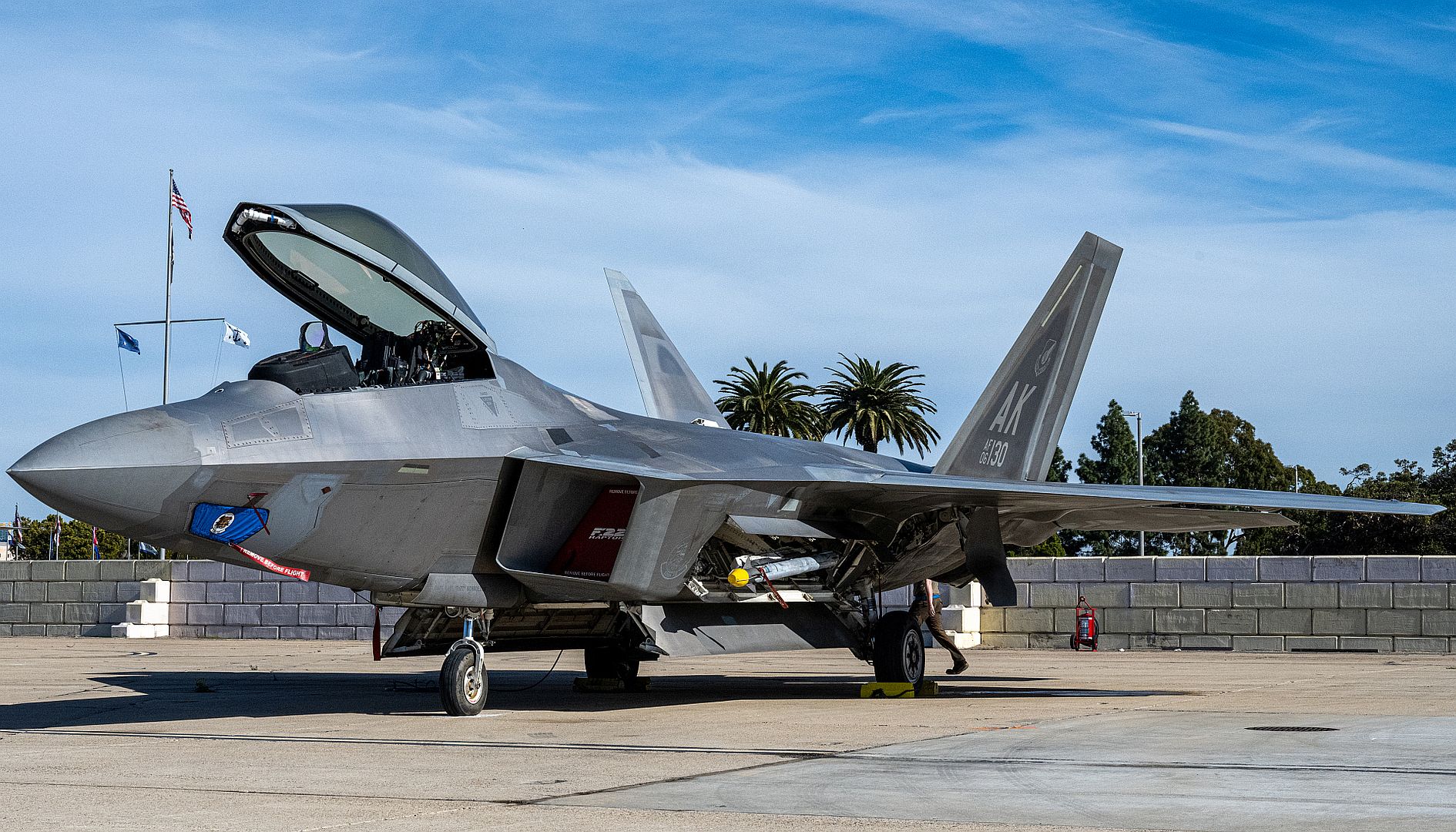
An F-22 Raptor deployed under the 525th Expeditionary Fighter Squadron, 3rd Air Expeditionary Wing, Joint Base Elmendorf-Richardson, Alaska, taxis on the airfield during Exercise Bamboo Eagle 24-1 at Naval Air Station North Island, California, Jan. 28, 2024. BE 24-1 was a first-of-its-kind exercise directed by the U.S. Air Force Warfare Center and is composed of approximately 3,000 U.S. joint service members, allies and partners from the Royal Air Force and Royal Australian Air Force, and more than 150 aircraft from 24 units dispersed across more than 10 locations in the western U.S. Through the use of designated air space, BE 24-1 provided Airmen, allies and partners a flexible, combat-representative, multidimensional battlespace to conduct testing tactics development and advanced training in support of U.S. national interests. (U.S. Air Force photo by Tech. Sgt. Curt Beach)
Members of the Japan Air Self-Defense Force and U.S. Air Force work on F15J Eagles during Cope North 24 on Andersen Air Force Base, Guam, Jan. 29, 2024. Cope North enhances U.S. relationships and interoperability with our regional Allies and partners by providing the opportunity to exchange information and improve shared tactics to better integrate multilateral defense capabilities. (U.S. Air Force photo by Airman 1st Class Spencer Perkins)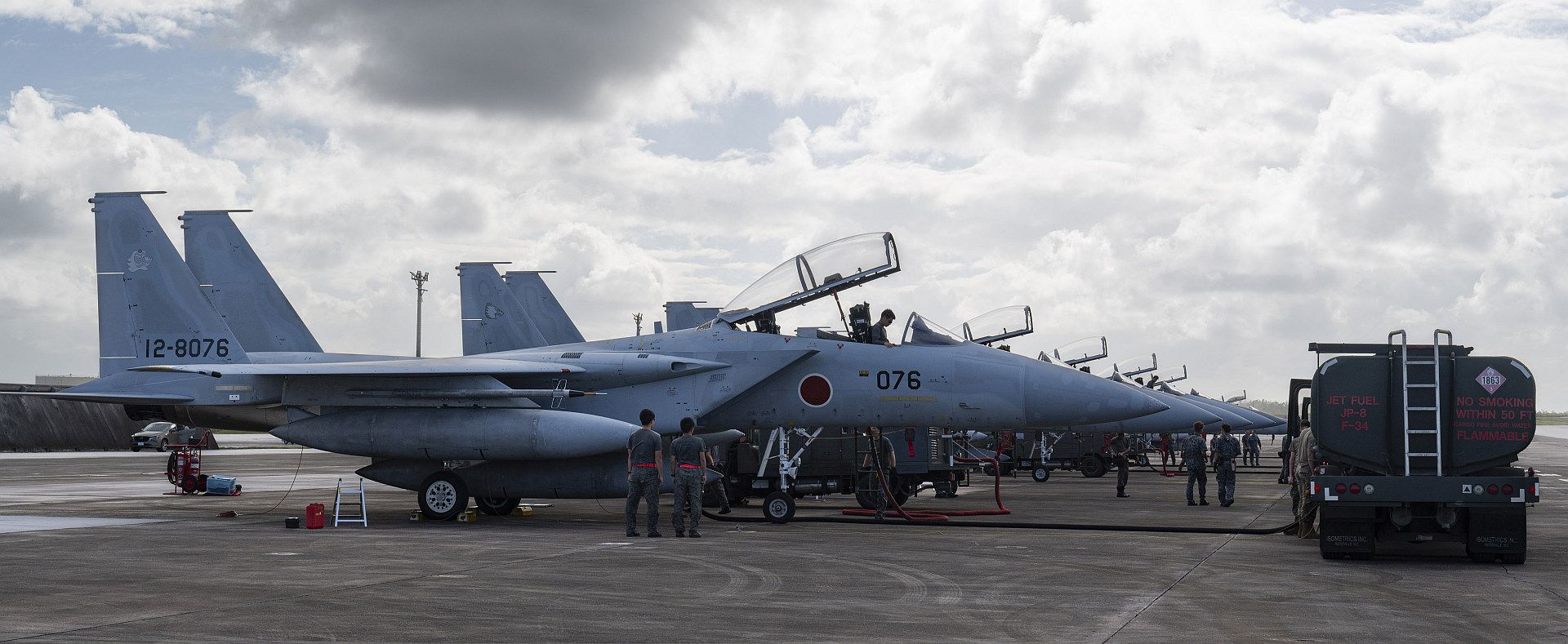
U.S. Air Force Airmen wait as the B-52H Stratofortress assigned to the 23rd Expeditionary Bomb Squadron arrives at Andersen Air Force Base, Guam, Feb. 1, 2024. Bomber Task Force missions, such as these, validate the always-ready, global strike capability of U.S. Strategic Command and enable Airmen to maintain a high state of proficiency and readiness. (U.S. Air Force photo by Master Sgt. Amy Picard)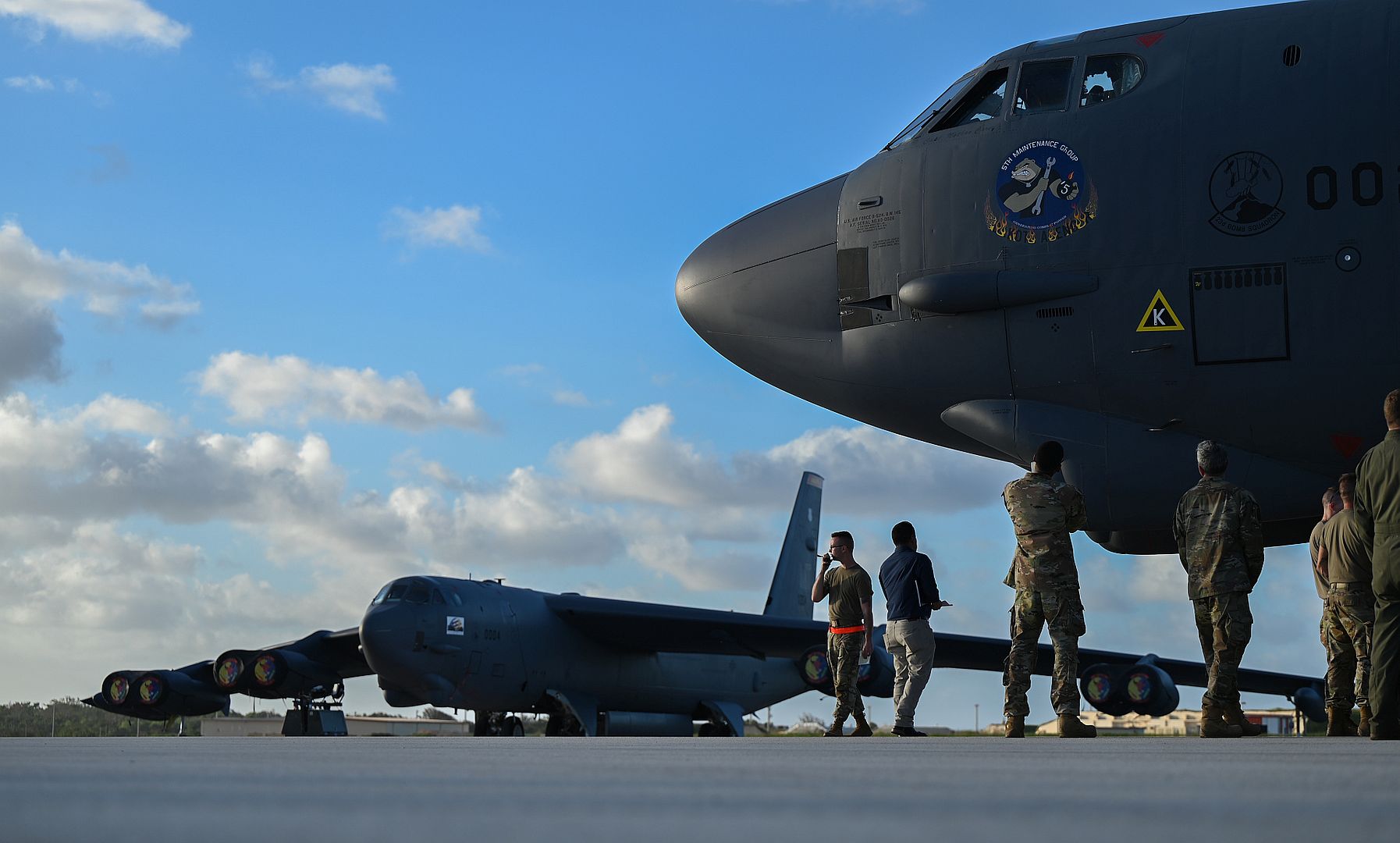
A Japan Air Self Defense Force F-15J Eagle participating in Cope North 24 takes off from Andersen Air Force Base, Guam, Feb. 2, 2024. Cope North strengthens the combined planning of air tactics, techniques and procedures between multilateral partners to enhance security and stability of the free and open Indo-Pacific. (U.S. Air Force photo by Senior Airman Tylir Meyer)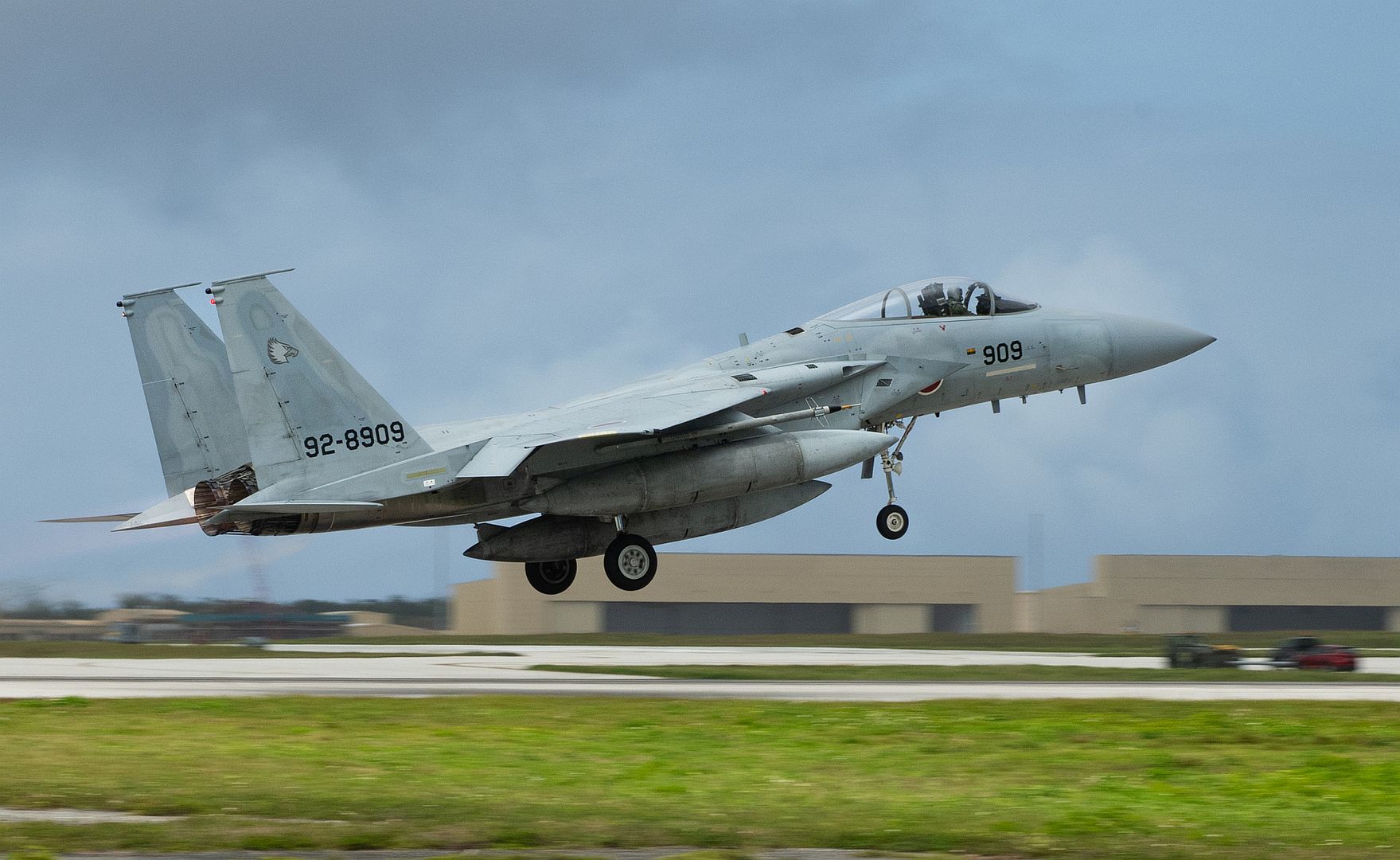
A U.S. Air Force F-15C Eagle participating in Cope North 24 taxis to undergo de-arming after landing at Andersen Air Force Base, Guam, Feb. 2, 2024. Cope North has served as a continuous event strengthening security and stability throughout the Indo-Pacific through 46 years of sustained integrated air operations. (U.S. Air Force photo by Senior Airman Tylir Meyer)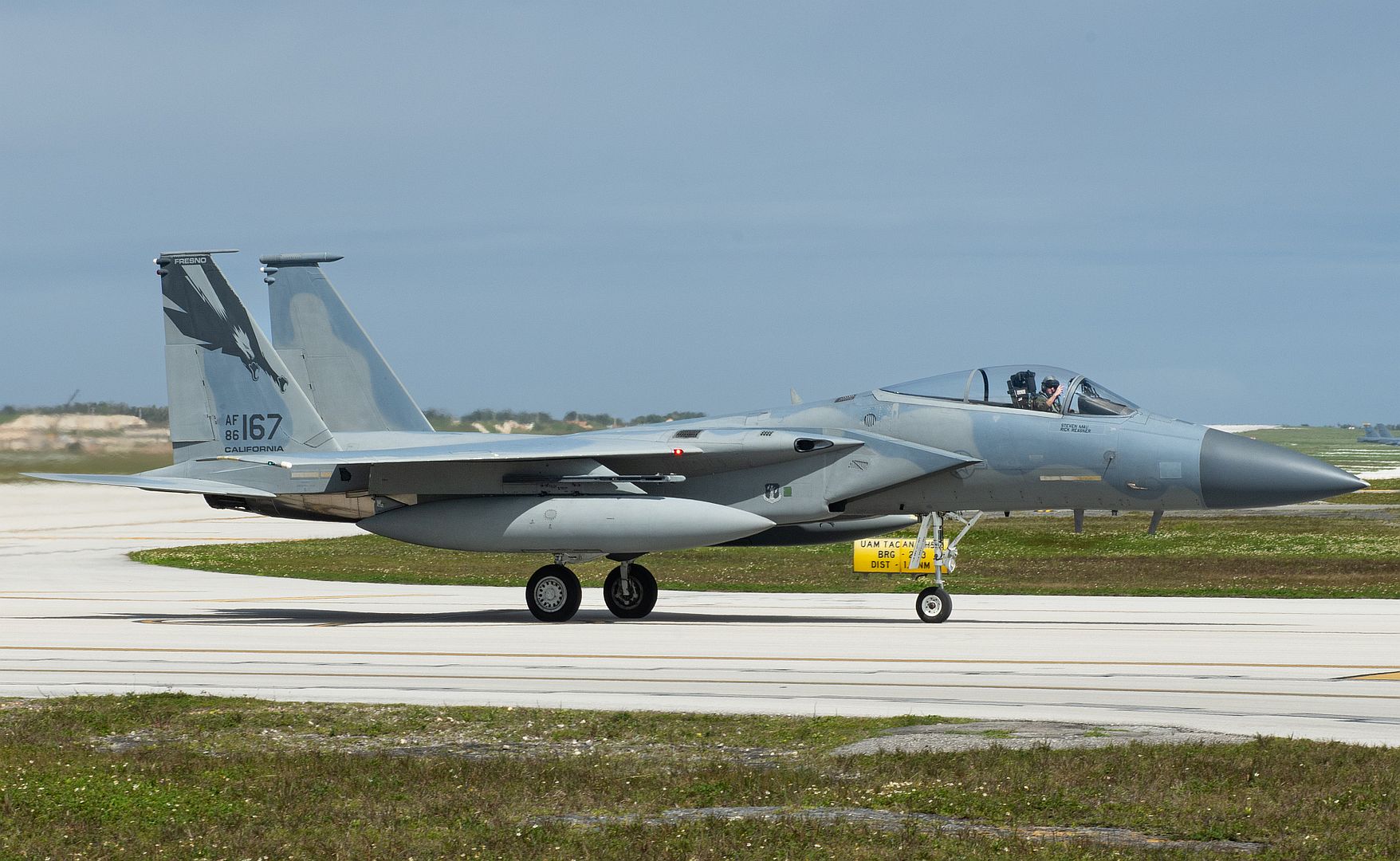
Japan Air Self Defense Force Mitsubishi F-2As participating in Cope North 24 sit on the ramp at Andersen Air Force Base, Guam, Feb. 2, 2024. Cope North strengthens the combined planning, planning of air tactics, techniques and procedures between multilateral partners to enhance security and stability of the free and open Indo-Pacific. (U.S. Air Force photo by Senior Airman Tylir Meyer)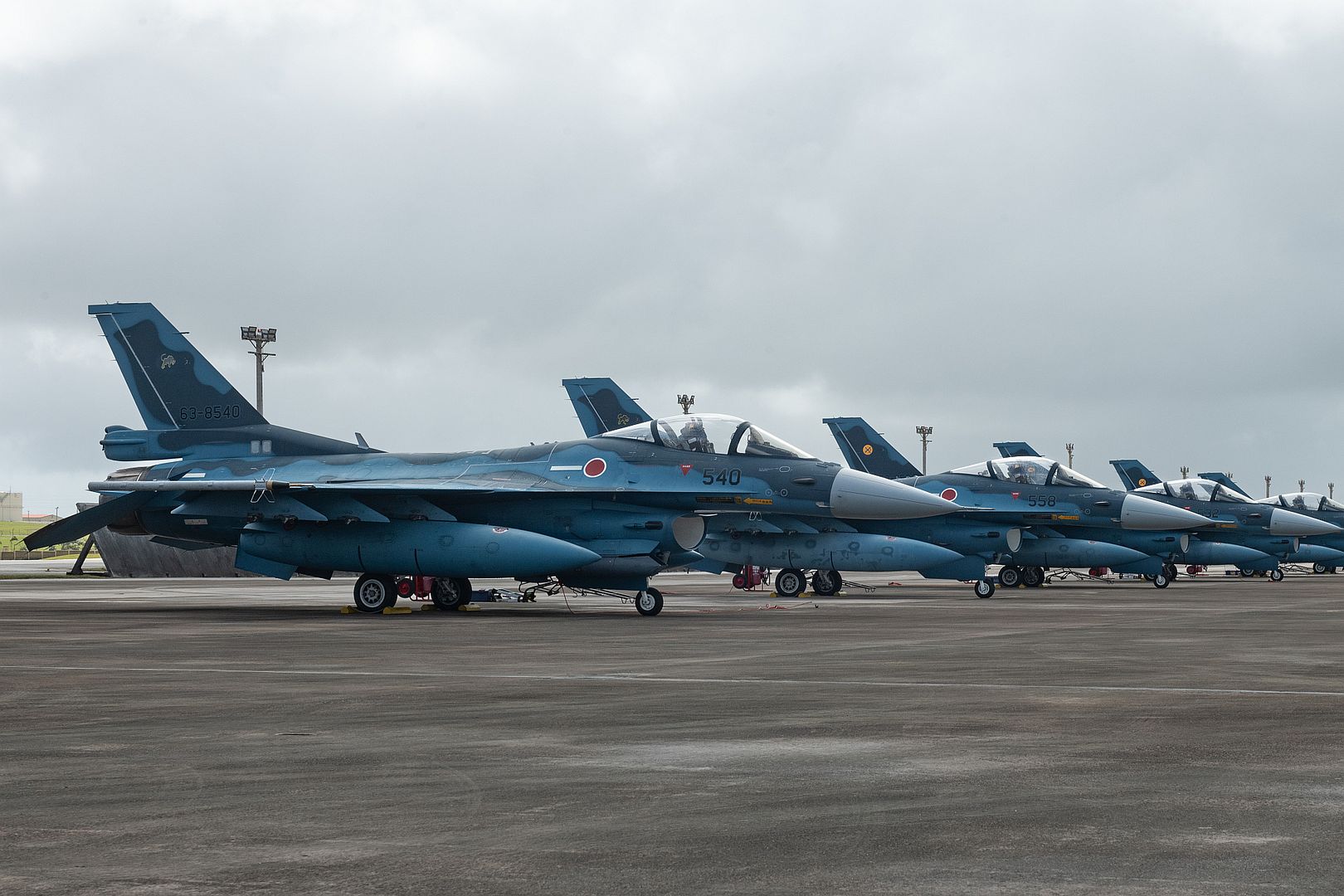
The 190th Fighter Squadron, 124th Fighter Wing, Idaho Air National Guard, practiced agile combat employment alongside other support agencies, Gowen Field, Idaho, Feb. 1-2, 2024. The IDANG pilots also conducted combat search and rescue with support from the Idaho Army National Guard’s UH-60 Black Hawks out of Gowen Field, Navy EA-18G Growlers from Electronic Attack Squadron 135 in Washington, the 266th Range Squadron, an IDANG tenant unit located at Mountain Home Air Force Base in Idaho, and the 152nd Airlift Wing, Nevada Air National Guard. ACE is a proactive and reactive operational scheme of maneuver to increase survivability while generating combat power. This joint exercise focused on testing command and control capabilities and concepts of operation while generating air power from different locations, all at a moment's notice.(U.S. Air National Guard photo by Staff Sgt. Joseph Morgan)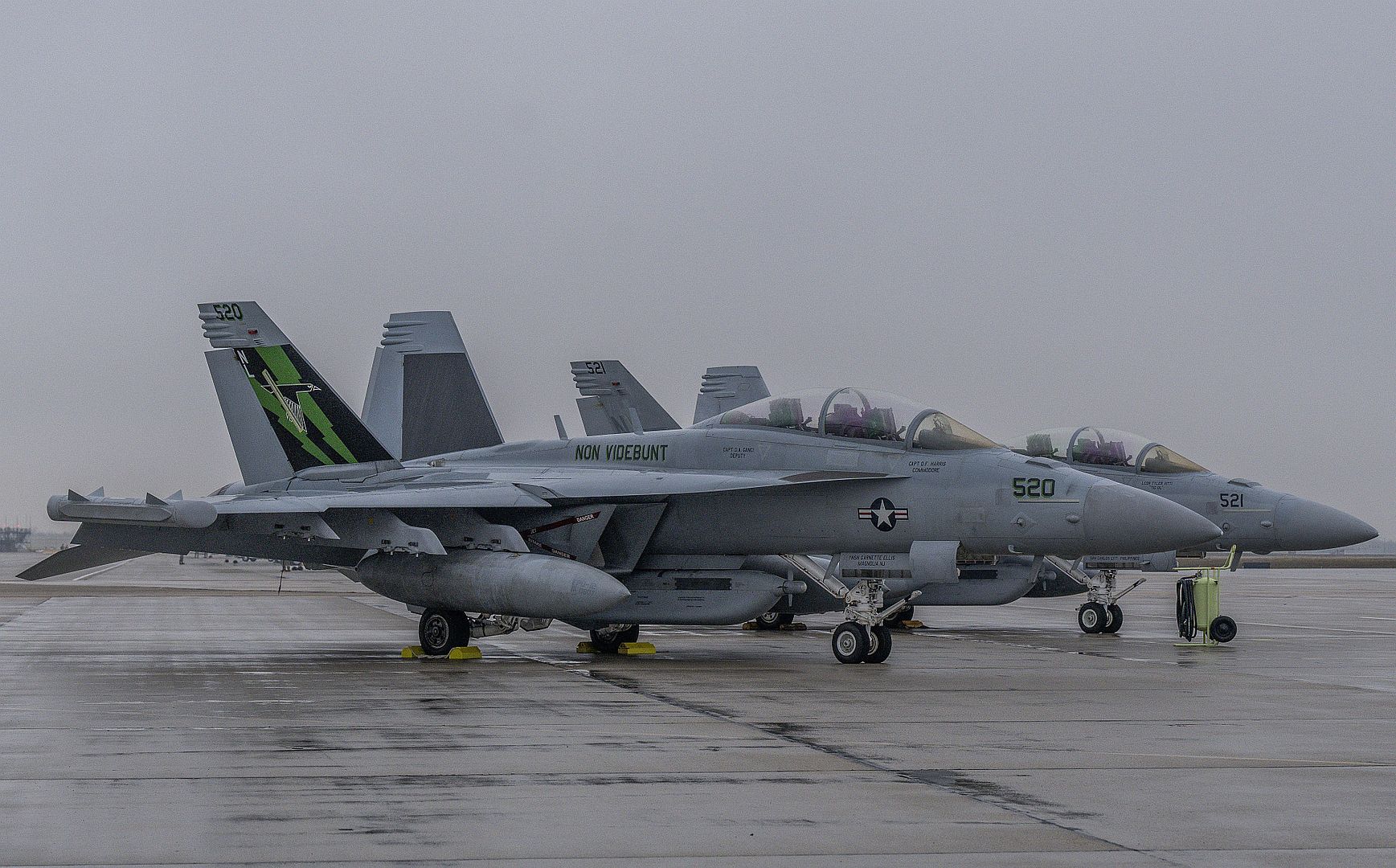
U.S. Air Force Maj. David Fishel, a 60th Fighter Squadron F-35A Lightning II pilot, taxis to the runway for takeoff at Eglin Air Force Base, Florida, Feb. 2, 2024. The 60th FS departed for Savannah Air National Guard Base, Georgia to maximize hours flown while avoiding air traffic delays and weather attrition. (U.S. Air Force photo by Airman 1st Class Christian Corley)
A U.S. B-52H Stratofortress assigned to the 69th Expeditionary Bomb Squadron takes-off at Andersen Air Force Base, Guam, as part of a routine Bomber Task Force mission, Feb. 3, 2024. The United States maintains a strong, credible bomber force that enhances the security and stability of Allies and partners. (U.S. Air Force photo by Master Sgt. Amy Picard)
SAN DIEGO – 05 January 2024 – During a series of demonstrations in December 2023, General Atomics Aeronautical Systems, Inc. (GA-ASI) and the U.S. Air Force Special Operations Command (AFSOC) worked collaboratively to execute several capability demonstrations as part of the Adaptive Airborne Enterprise (A2E) concept development.
The first demo featured the simultaneous control of three MQ-9A remotely piloted aircraft (RPA) by a single crew using the government-owned AFSOC RPA Control Suite (ARCS). ARCS adds additional capability to the Ground Control Station (GCS), by allowing a standard crew to control multiple UAS platforms. The second demo showed that an MQ-9A can launch a Altius 600 from a launch pod.
“We have established a great partnership with AFSOC,” said David R. Alexander, president of GA-ASI. “We know our RPA will be a key building block for AFSOC to achieve its A2E vision.”
AFSOC is acquiring MQ-9B from GA-ASI for rapid prototyping and will forego a traditional GCS to control the RPA. Rather, AFSOC intends to control both the MQ-9A and MQ-9B aircraft, as well as a family of small UAS, from the ARCS. This event demonstrated the viability of ARCS to control the MQ-9A platform, which will lay the foundation for future work to integrate the MQ-9B aircraft into ARCS. This event also demonstrated the viability to operate the MQ-9 platform as surrogates for small UAS, all of which will be controlled by ARCS.
“These demonstrations were what we needed to really start to make A2E a reality,” said AFSOC Col. Trey Olman. “This was the first time we were able to demonstrate control of multiple RPAs from a single workstation, which is important in reducing manpower requirements.”
The A2E demonstrations took place at Cannon Air Force Base, N.M. and Melrose Air Force Range (MAFR), N.M., and utilized Satellite Communications (SATCOM) Launch & Recovery (SLR). AFSOC launched the three MQ-9As using GA-ASI’s Portable Aircraft Control Stations (PACS) and Ground Control Stations. Once airborne, control for the three MQ-9A was handed from the three GCS to a single ARCS workstation. Control of all three aircraft was handed back from ARCS to each GCS and the three aircraft performed SATCOM landings via GA-ASI’s Automatic Takeoff and Landing Capability (ATLC).
The A2E concept envisions AFSOC projecting air power from beyond the horizon, using a family of large, unmanned aircraft along with small, expendable UAS, from permissive to denied environments. MQ-9B is the ideal platform for inserting air-launched effects into potentially hostile environments. The MQ-9B’s combination of range, endurance, reduced manpower footprint, and overall flexibility will key to AFSOC’s future family of advanced UAS systems.
About GA-ASI
General Atomics Aeronautical Systems, Inc. (GA-ASI), an affiliate of General Atomics, is a leading designer and manufacturer of proven, reliable RPA systems, radars, and electro-optic and related mission systems, including the Predator® RPA series and the Lynx® Multi-mode Radar. With more than eight million flight hours, GA-ASI provides long-endurance, mission-capable aircraft with integrated sensor and data link systems required to deliver persistent situational awareness. The company also produces a variety of sensor control/image analysis software, offers pilot training and support services, and develops meta-material antennas.
For more information, visit www.ga-asi.com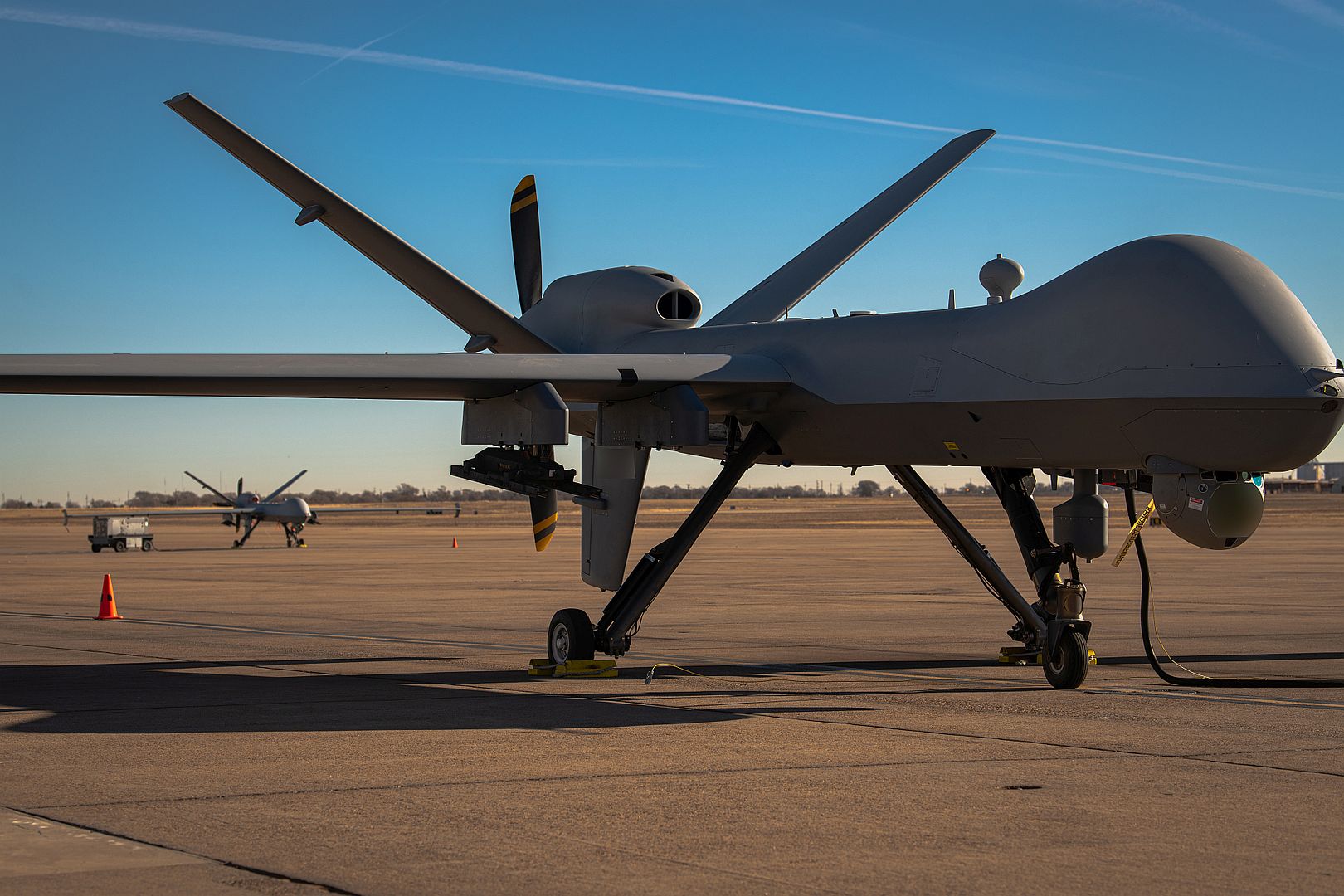
-
1 year agoTue Feb 06 2024, 09:15pmDuggy
 Main AdminTyphoons from Royal Air Force Coningsby based XI (Fighter) Squadron have arrived in the Kingdom of Saudi Arabia to join this year’s Spears of Victory exercise.
Main AdminTyphoons from Royal Air Force Coningsby based XI (Fighter) Squadron have arrived in the Kingdom of Saudi Arabia to join this year’s Spears of Victory exercise.
The RAF are again taking part in this large scale, annual Saudi hosted multinational air warfare training exercise. The RAF are joining contingents from several branches of the Kingdom of Saudi Arabia’s military, as well as detachments from Bahrain, Oman, Qatar, the United Arab Emirates, France, Greece, Pakistan and the United States.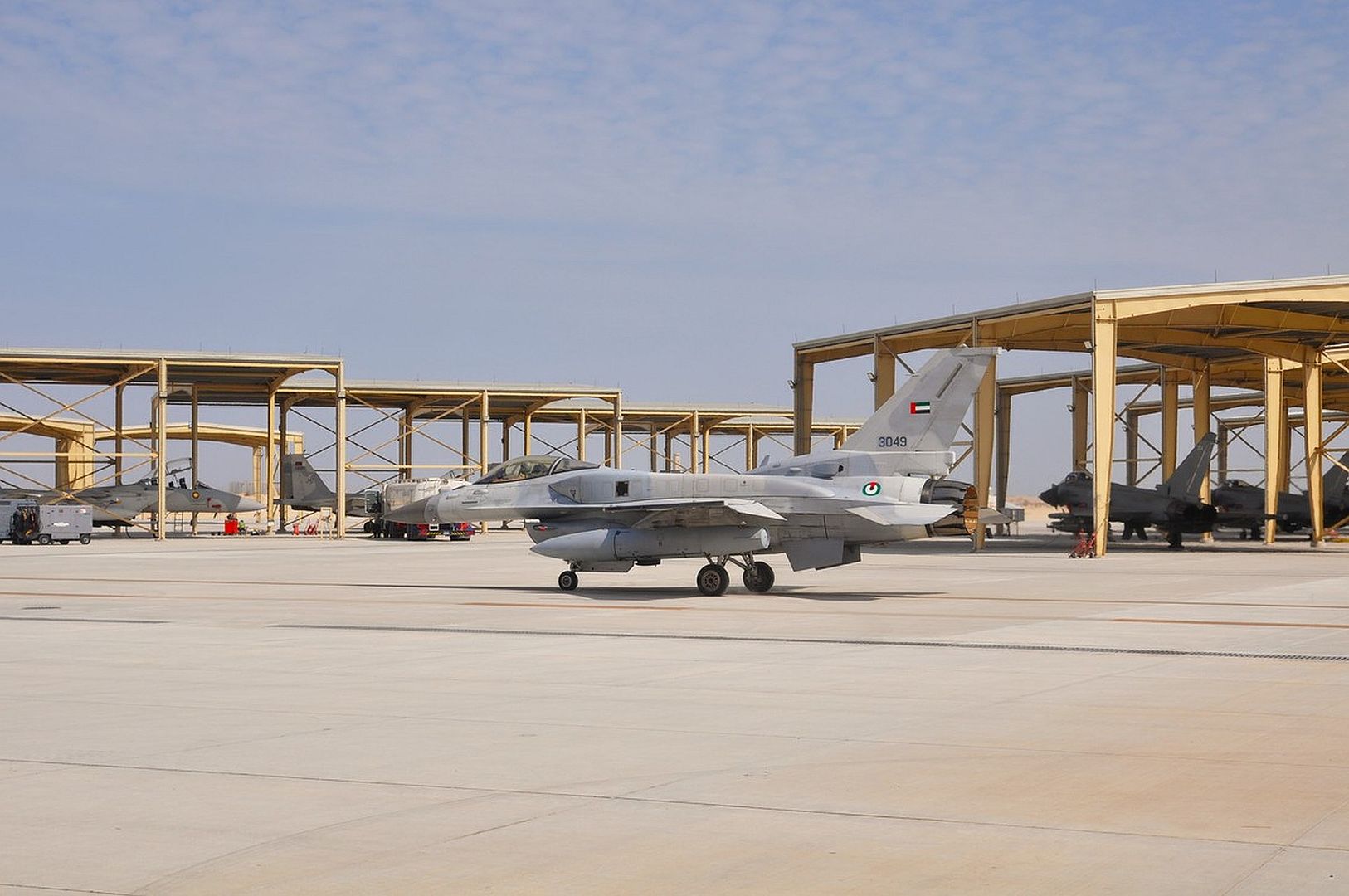
During the exercise the nations will be conducting a range of intensive air training activities, to increase the tactical proficiency of all the participating nations. By working together, the exercise aims to develop the participating nations' ability to jointly plan and execute complex missions, in a contested air environment.
(Photos courtesy of the RAF)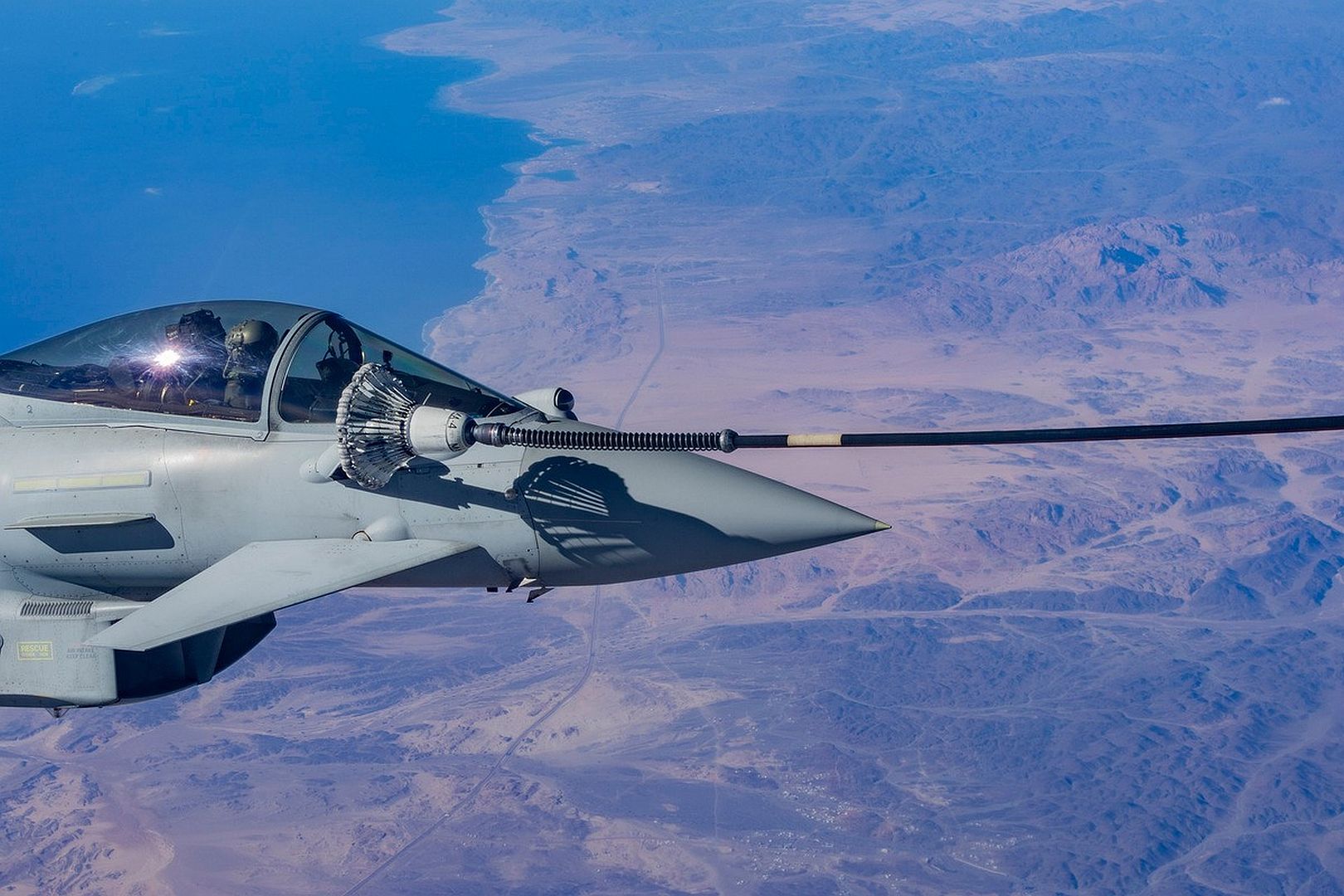
VERO BEACH, FL, February 6, 2024 – Piper Aircraft, Inc. announced today a new model in its PA46 line of high-performance aircraft—the Piper M700 FURY—a single-engine, 700 shaft horsepower, cabin-class turboprop.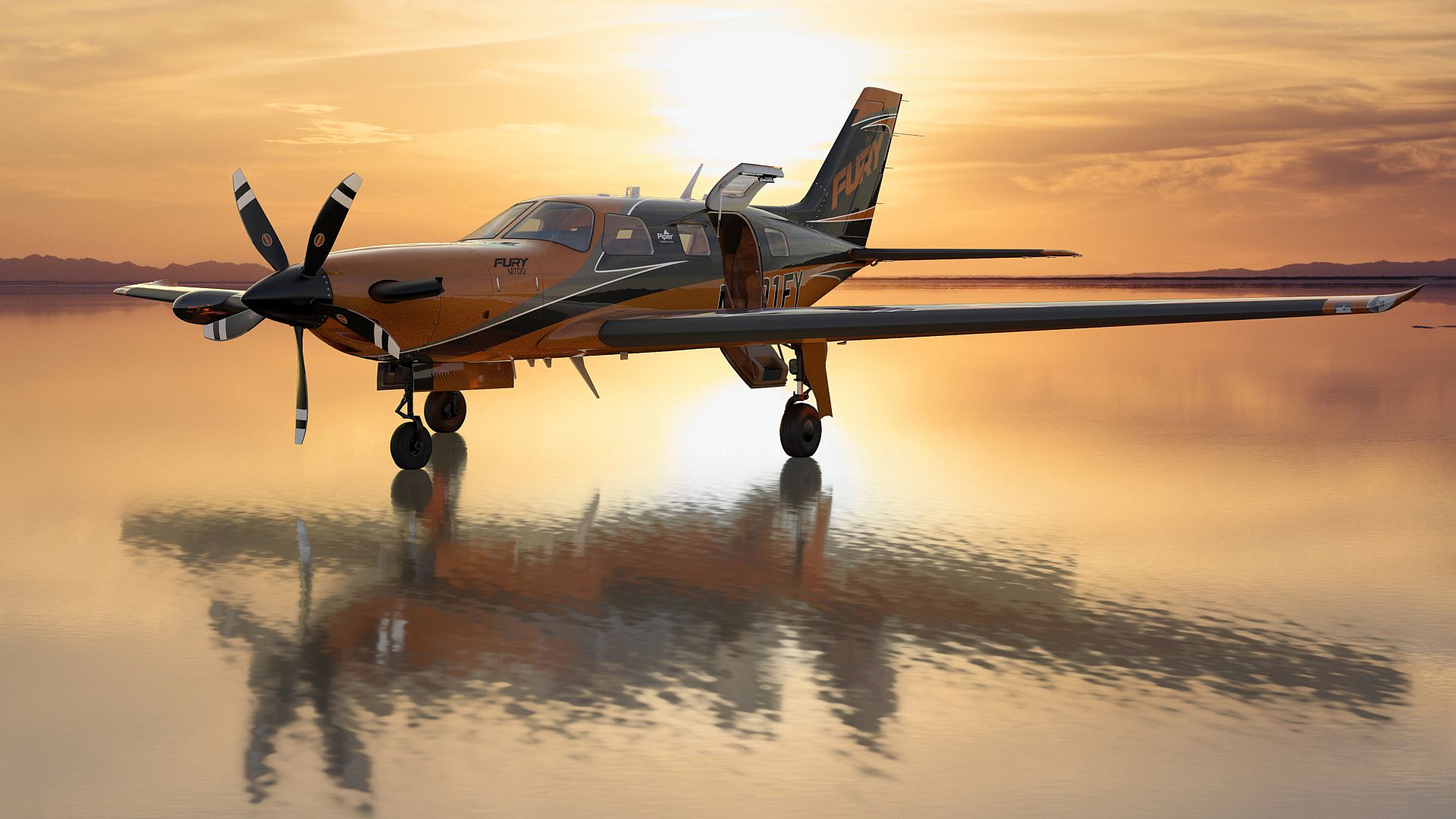
The Piper M700 FURY represents the first step towards a new generation of the M-Class family, outperforming past PA46 models and several competitive aircraft in performance, operational cost efficiencies, and overall value. Powered by the Pratt & Whitney PT6A-52 engine, the M700 FURY boasts a maximum cruise speed of 301 ktas with a max range of 1,149 nm / 1,849 km (at max cruise speed, 1,424 nm at normal cruise speed) while maintaining its Basic Med compliant 6,000-pound MGTOW limit.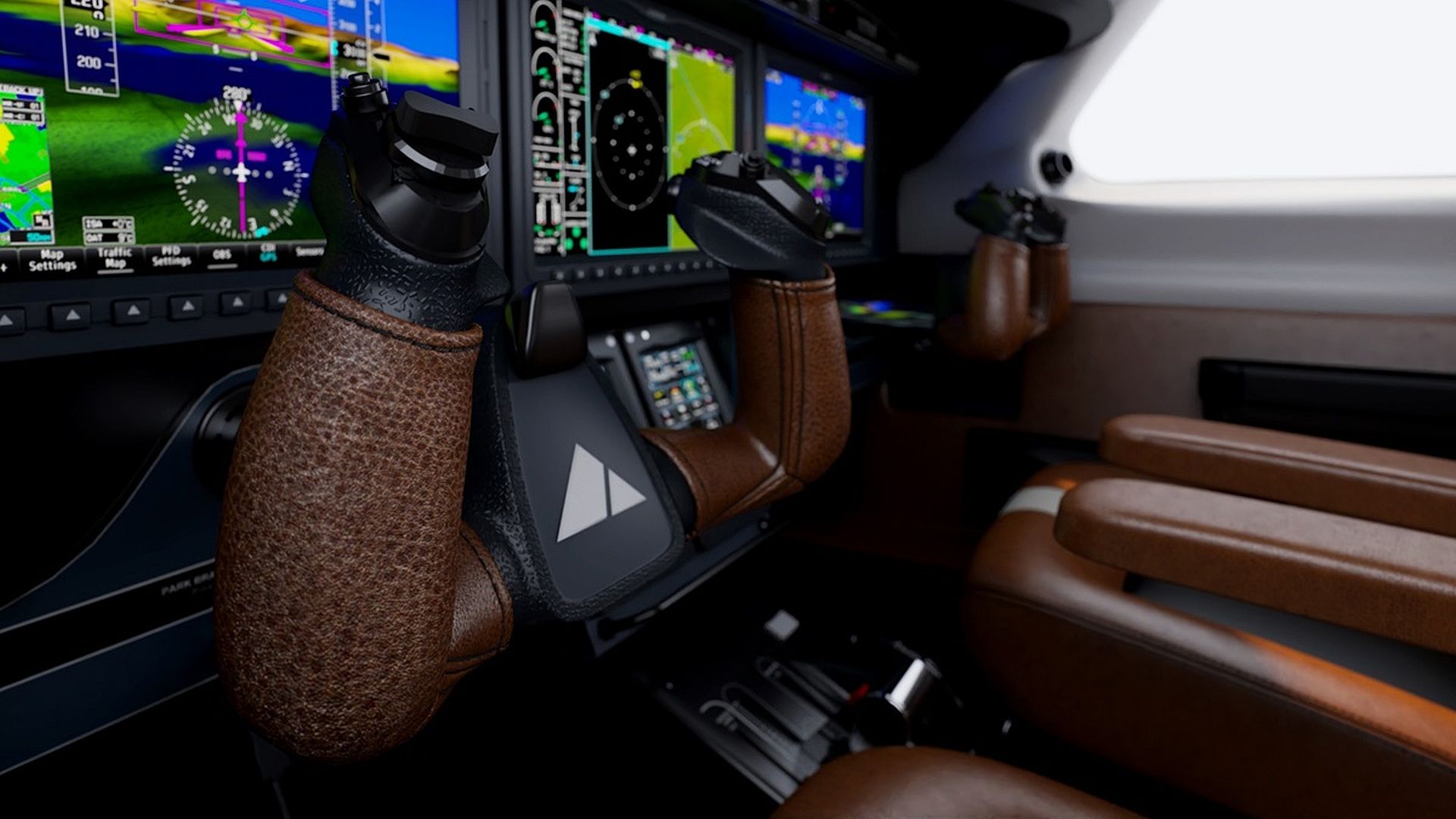
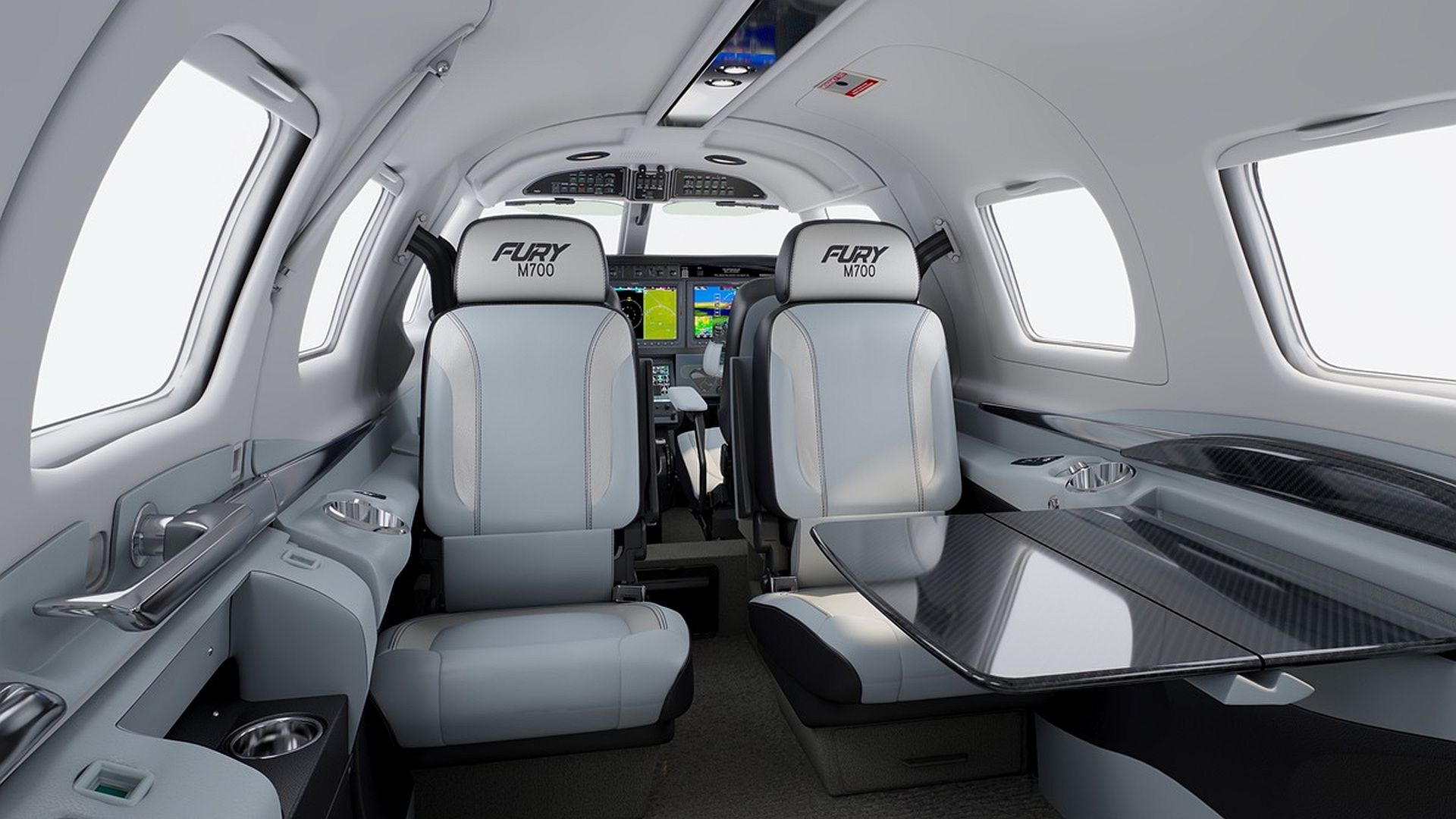
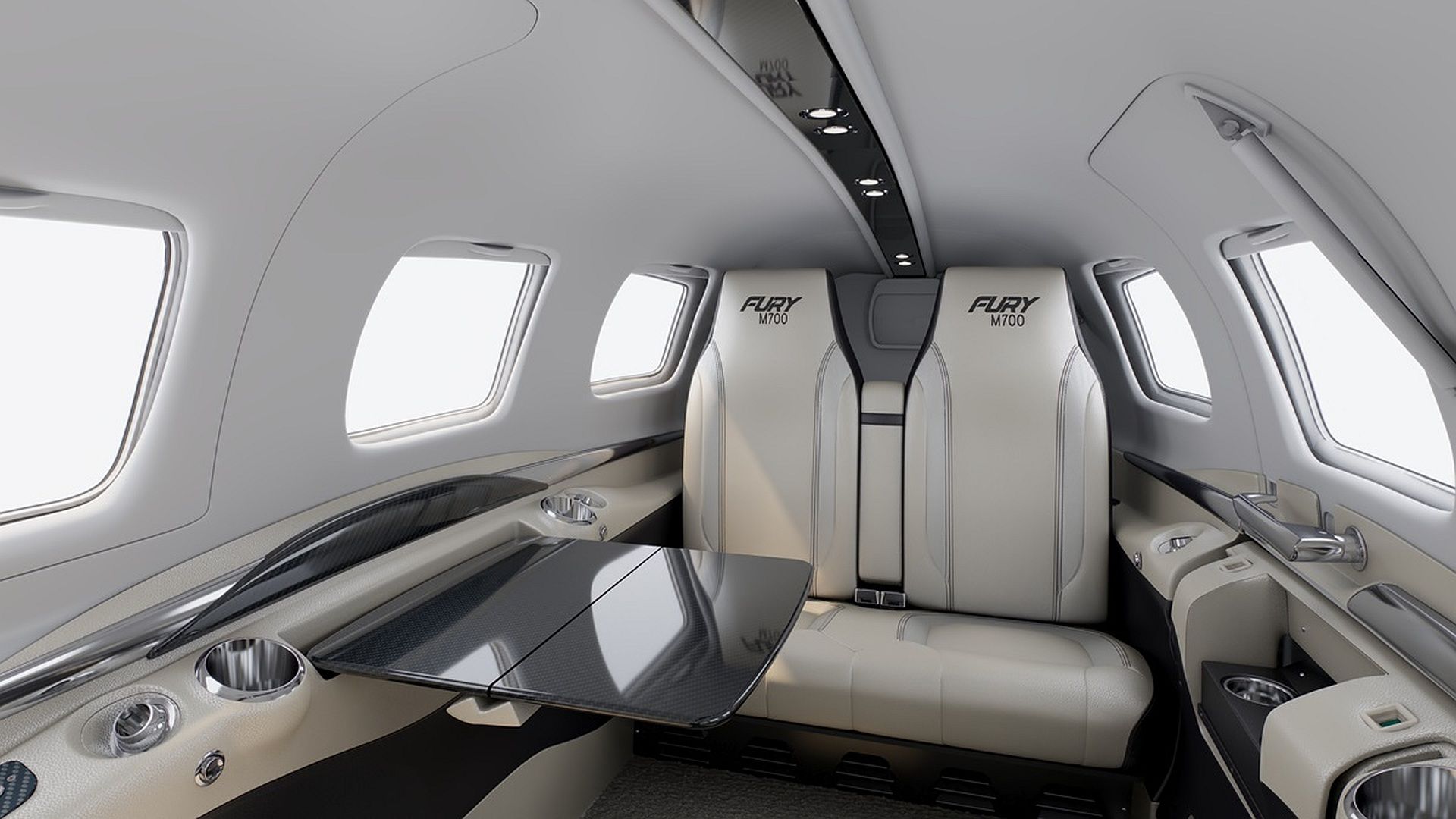
At a 301-knot max cruise speed, the M700 FURY stands alone as the fastest single-engine aircraft in Piper’s enviable 87-year, 134,000 unit production history, and it’s the second fastest model of all time. Only the mighty Piper Cheyenne 400LS turbine twin is faster.
The Turkish Stars, the aerobatic demonstration team for the Turkish Air Force, performs during the Saudi World Defense Show near Riyadh, Saudi Arabia, Feb. 5, 2024. Saudi Arabia’s WDS 2024, one of the region’s largest defense expositions, includes a wide array of aircraft and assets from across the U.S. Department of Defense. The U.S.’s commitment of personnel and aircraft to the Saudi WDS highlights the importance of continued defense cooperation between allies and partners with a shared vision for enduring peace and stability in the region. (U.S. Air Force courtesy photos)
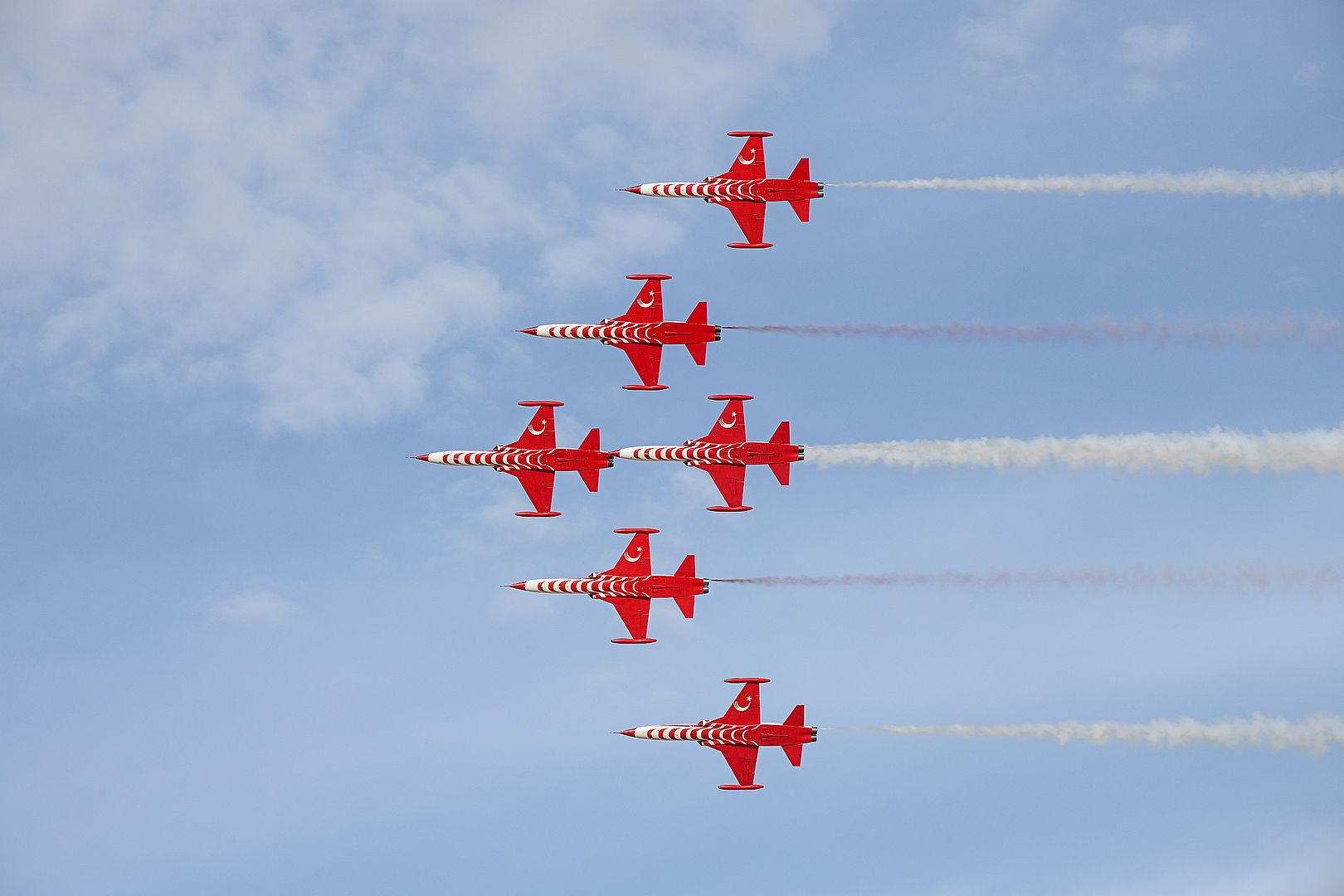
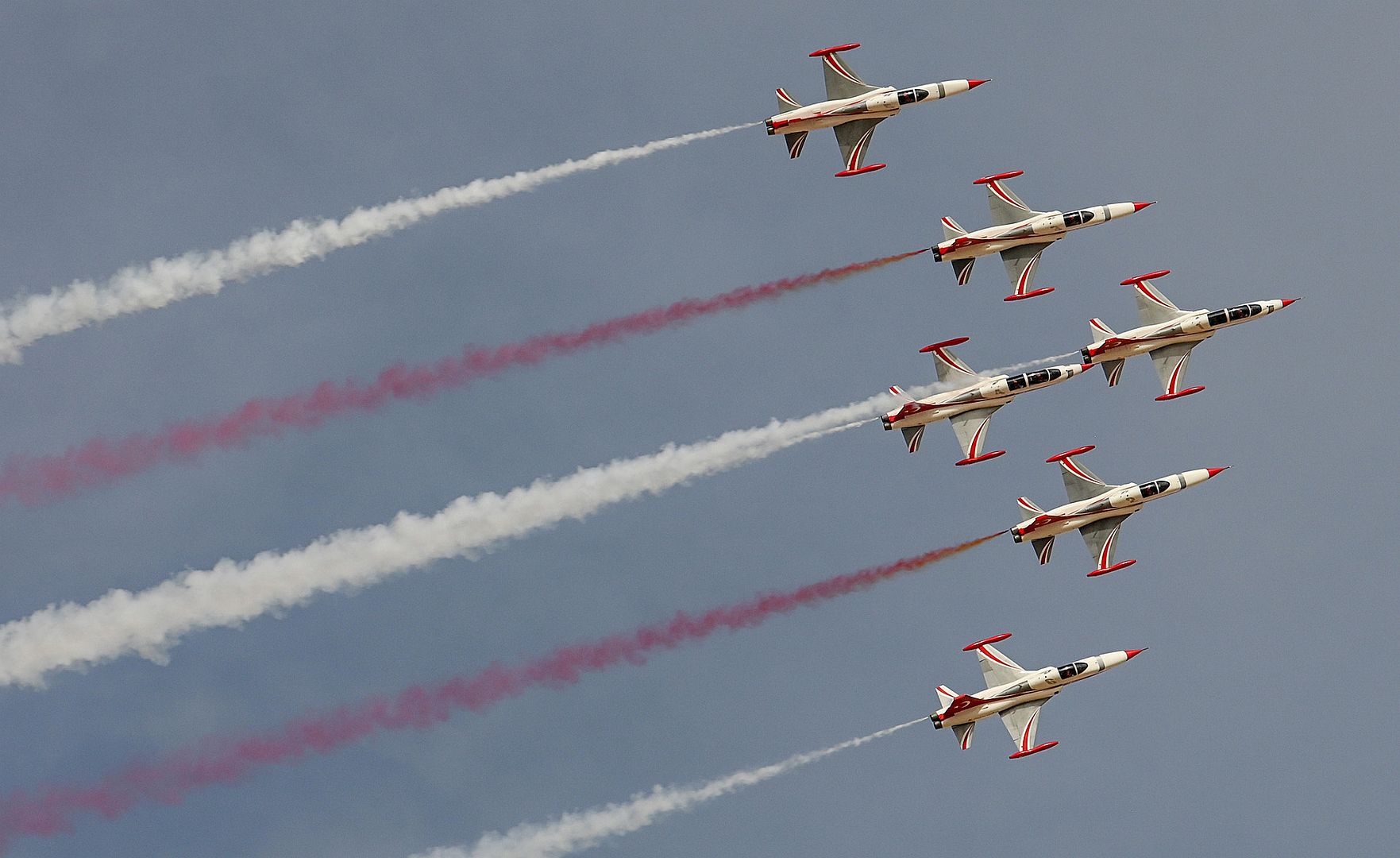

A U.S. Navy P-8 aircraft preforms a fly-by during the Saudi World Defense show at an undisclosed location in the Central Command area of responsibility, Feb. 5, 2024. The U.S.’s regional partners operating throughout U.S. Central Command’s area of responsibility focuses on building lasting relationships through political, diplomatic, economic, and military channels to advance regional alliances and collective capabilities. (U.S. Air Force courtesy photo)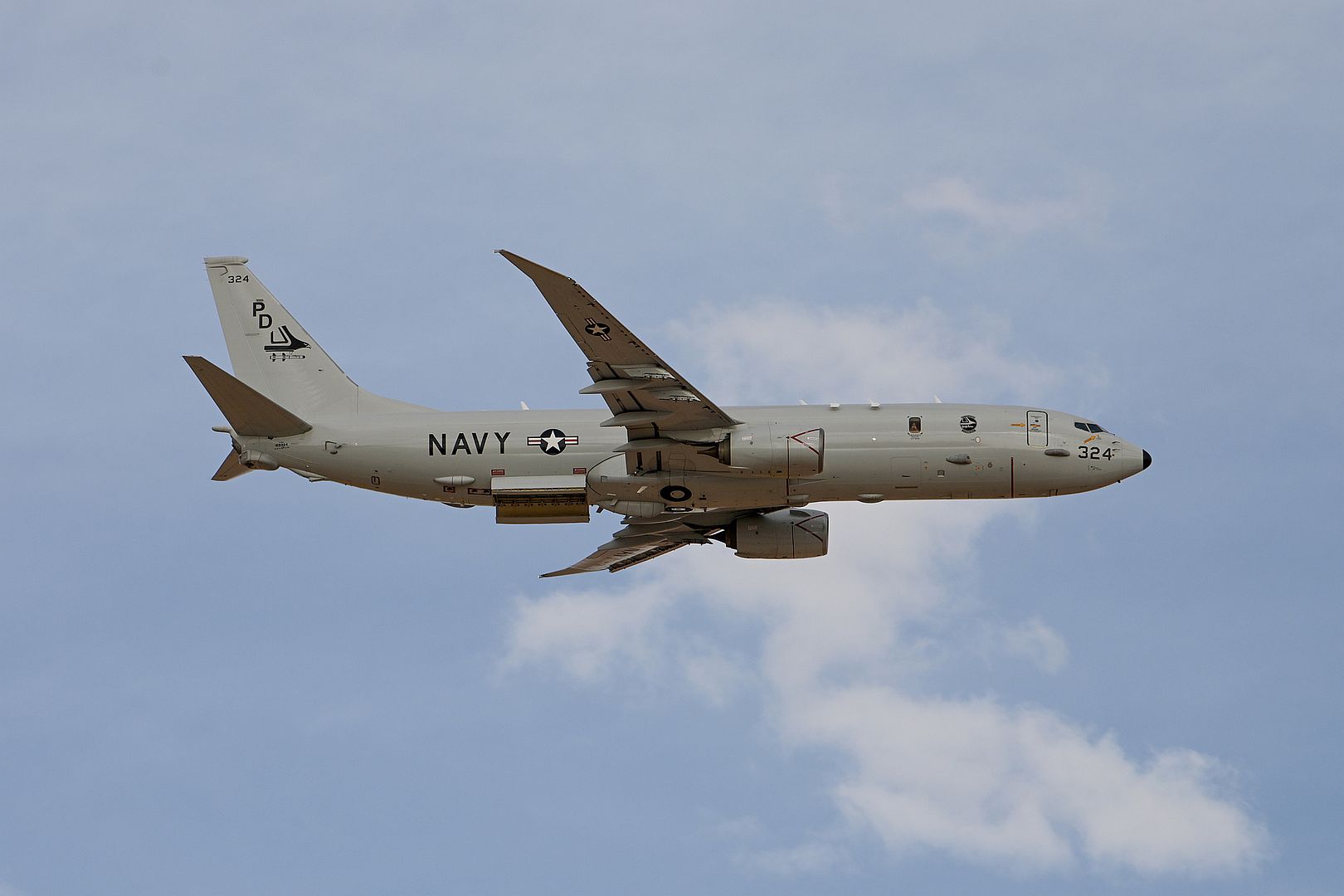
During Cope North 24 a U.S. Air Force B-52 Stratofortress is flanked from left to right by a U.S. Navy E/A-18 Growler, Japanese Air Self-Defense Force F-2, F-15MC, USAF F-16CM, JASDF U-125A, USAF F-16CM, USAF F-15C, JASDF F-2 and a U.S. Marine Corps F/A-18 Hornet during a multinational formation over Tinian and Saipan Feb. 6, 2024.
Participants exercise interoperability during Cope North 24 through agile combat employment and integrated generation of Air Power from dispersed locations across the Indo-Pacific. (U.S. Air Force photo by Staff Sgt. Gerald R. Willis)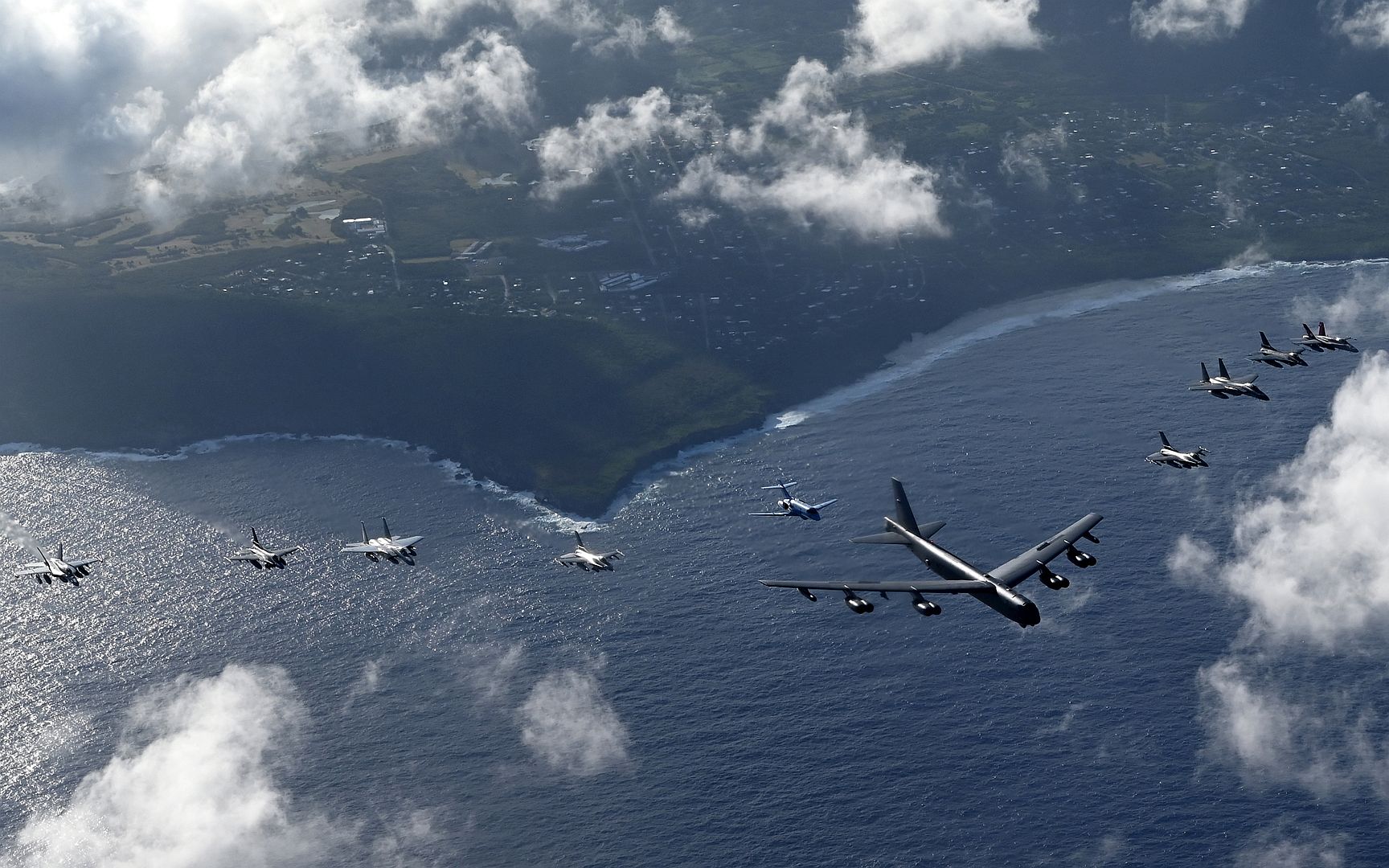
An F-35 Lightning II sits on the runway during the “Maple Thunder” exercise, at North Auxiliary Airfield, Joint Base Charleston, North, South Carolina, January 30, 2024. Airman with the 158th FW are participating in Maple Thunder to implement the Agile Combat Employment concept. (U.S. Air Force photo by Dr. Sandeep Mulgund)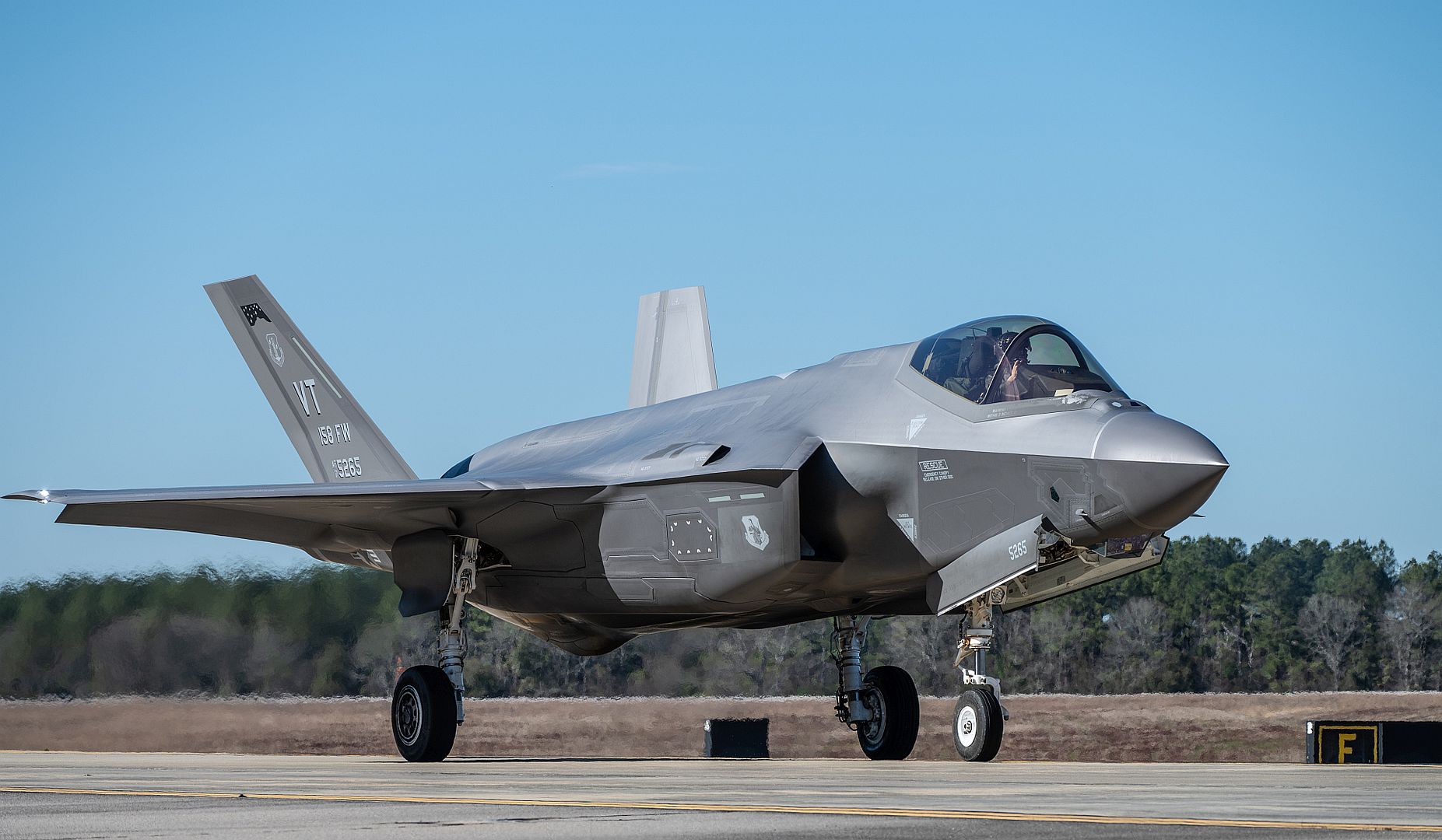
Two U.S. Air Force F-15 Strike Eagles fly next to a KC-135 Stratotanker after receiving fuel during Bamboo Eagle 24-1 over the coast of California, Jan. 30, 2024. The U.S. Air Force Warfare Center hosted the first iteration of Bamboo Eagle, which ensures total readiness through combat representatives training across multiple domains and adds elements of Agile Combat Employment. Approximately 3,000 U.S. service members across four branches and close to 300 combined allies from the Royal Air Force and Royal Australian Air Force participated, improving interoperability that reflects coalition forces in a future fight. The large-scale exercise also synchronized with the Air Force Force Generation model and served as a certification event to ensure force capabilities are optimally mission ready when tasked to support Combatant Commanders. (U.S. Air Force photo by Senior Airman Haiden Morris)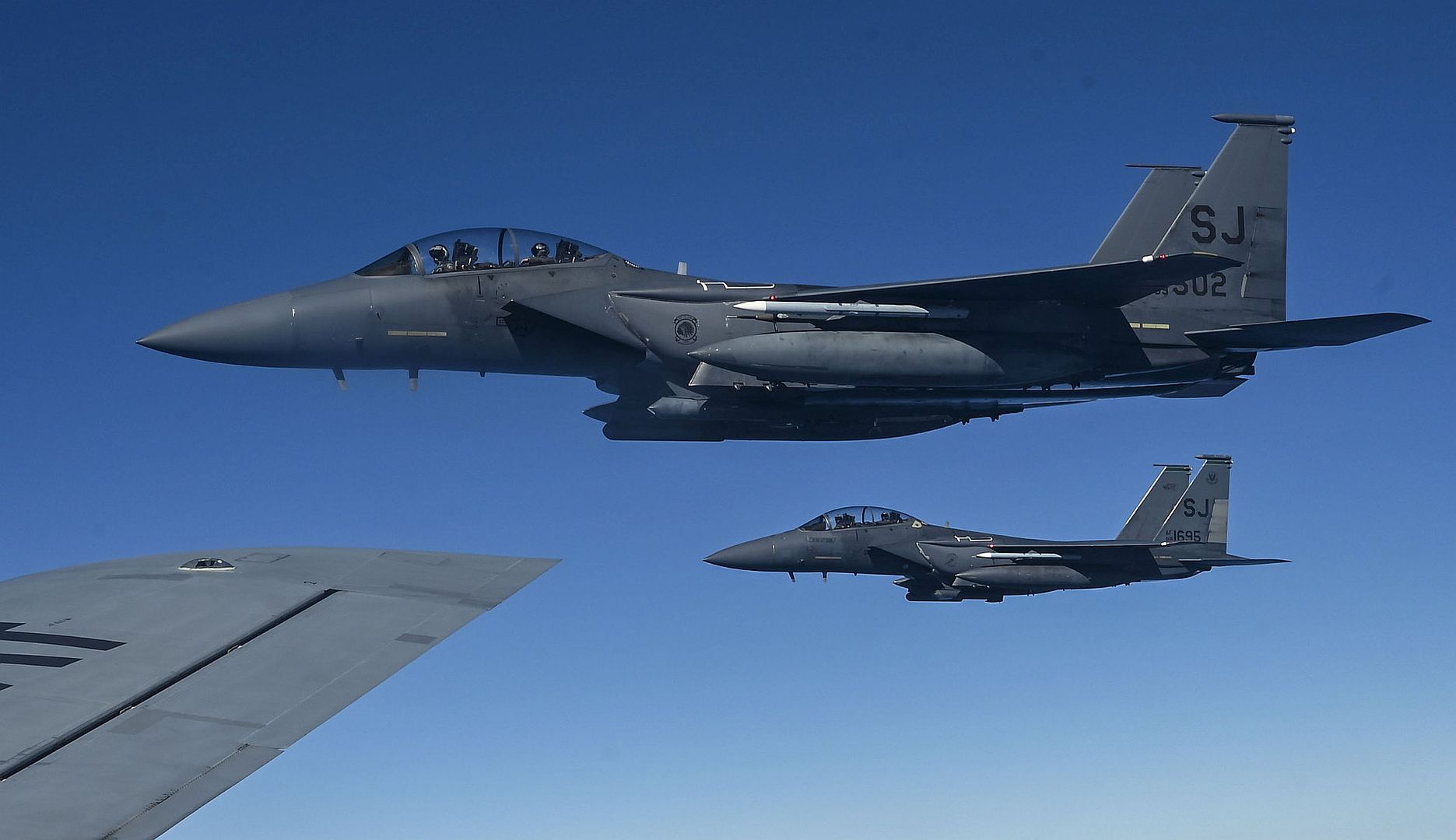
-
1 year agoWed Feb 07 2024, 08:42pmDuggy
 Main AdminMaj. Kristin “BEO” Wolfe demonstrates the capabilities of the F-35A Lighting II, a single seat, single engine, all-weather stealth multirole fighter aircraft, during a practice flight with the F-35 Demonstration Team at Hill Air Force Base, Utah Feb. 6, 2024. (U.S. Air Force photo by Senior Airman Jack Rodgers)
Main AdminMaj. Kristin “BEO” Wolfe demonstrates the capabilities of the F-35A Lighting II, a single seat, single engine, all-weather stealth multirole fighter aircraft, during a practice flight with the F-35 Demonstration Team at Hill Air Force Base, Utah Feb. 6, 2024. (U.S. Air Force photo by Senior Airman Jack Rodgers)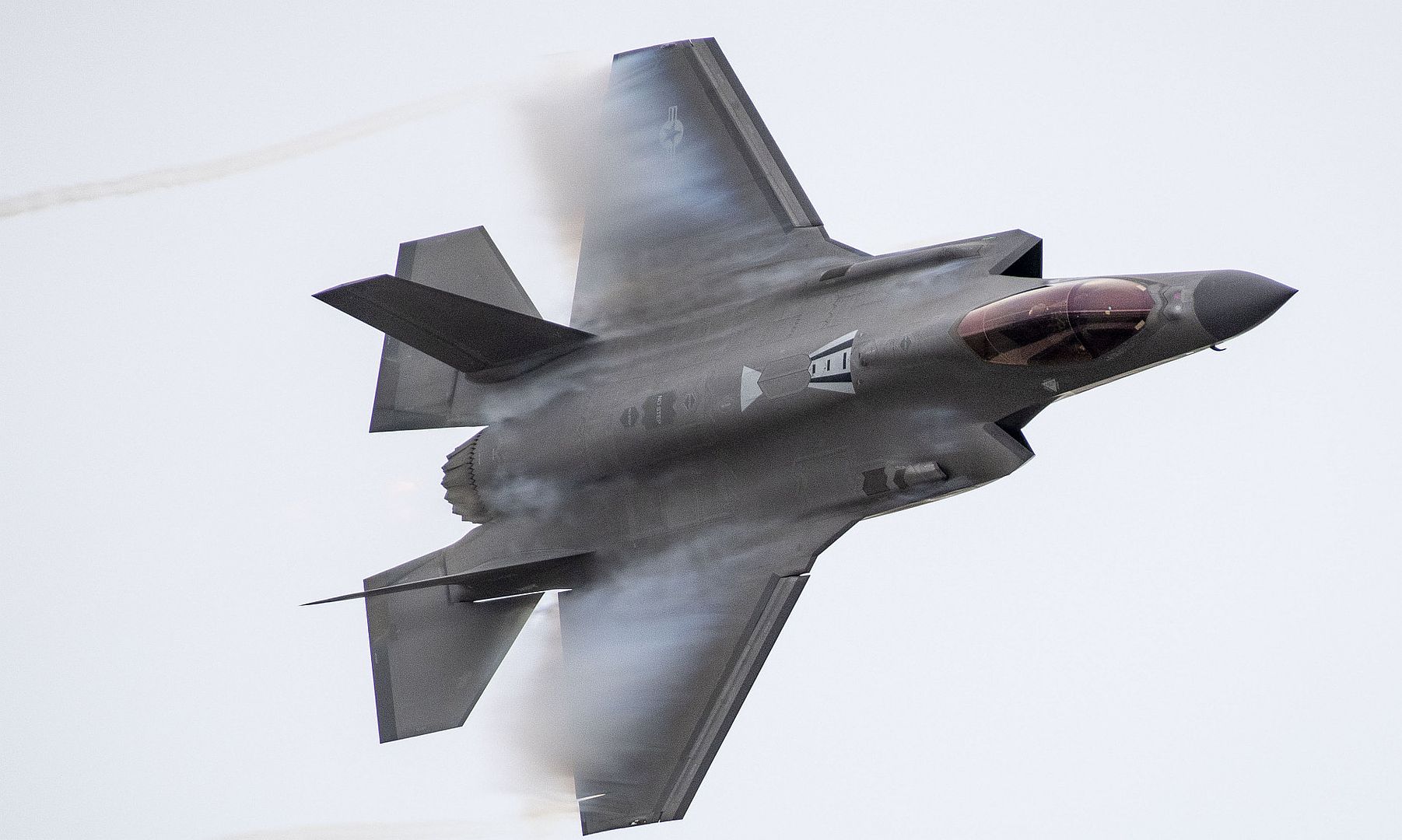
A U.S. Air Force E-3 Sentry assigned to the 552nd Air Control Wing, Air Combat Command, taxis during a multinational elephant walk as part of Cope North 24 at Andersen Air Force Base, Guam, Feb. 5, 2024.
Cope North enhances U.S. relationships and interoperability with our regional Allies and partners by providing the opportunity to exchange information and improve shared tactics to better integrate multilateral defense capabilities. (U.S. Air Force photo by Staff Sgt. Gerald R. Willis)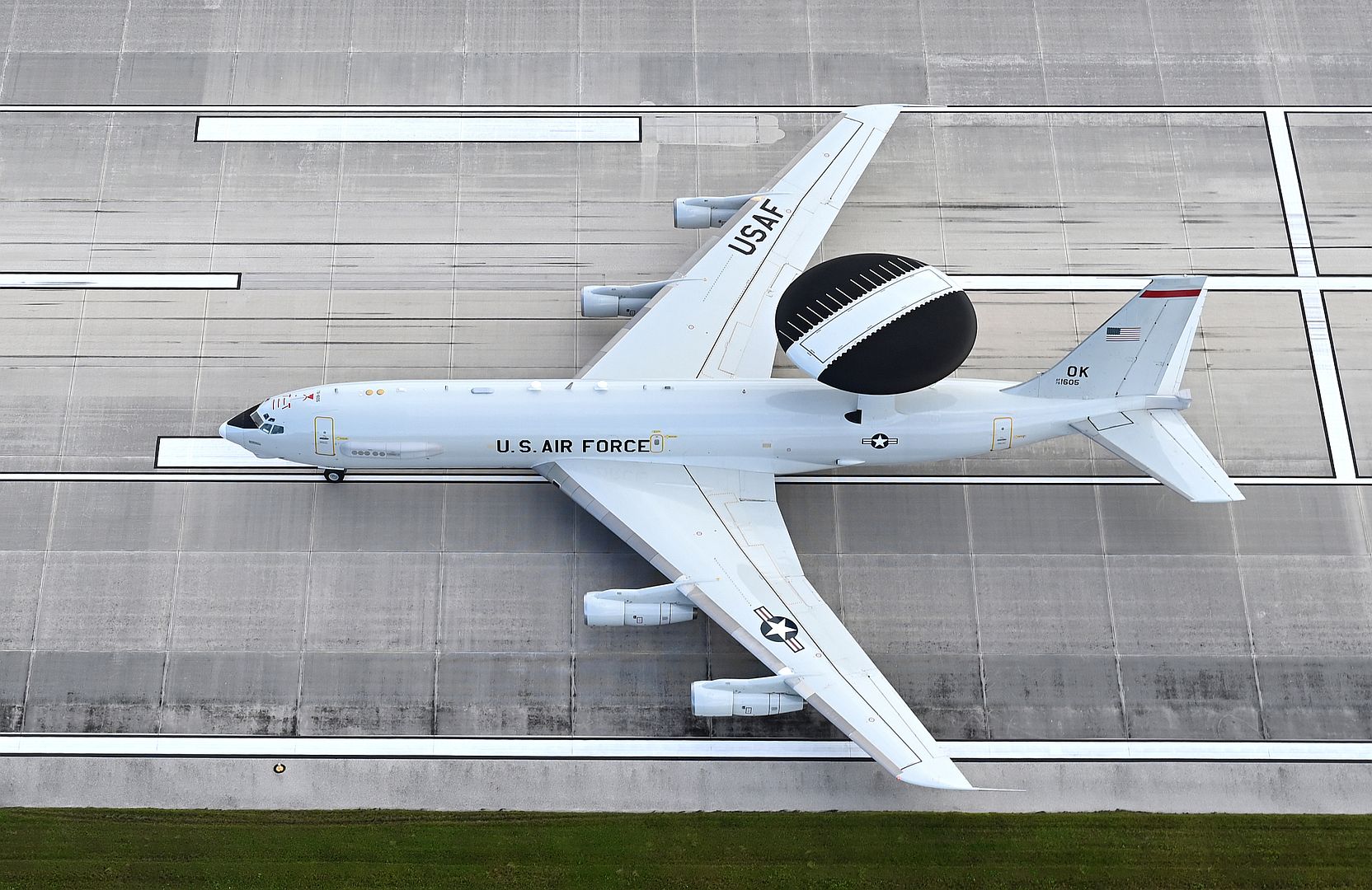
A U.S. Air Force KC-135 Stratotanker assigned to the 940th Air Refueling Wing, Air Force Reserve Command, taxis during a multinational elephant walk as part of Cope North 24 at Andersen Air Force Base, Guam, Feb. 5, 2024.
Cope North enhances U.S. relationships and interoperability with our regional Allies and partners by providing the opportunity to exchange information and improve shared tactics to better integrate multilateral defense capabilities. (U.S. Air Force photo by Staff Sgt. Gerald R. Willis)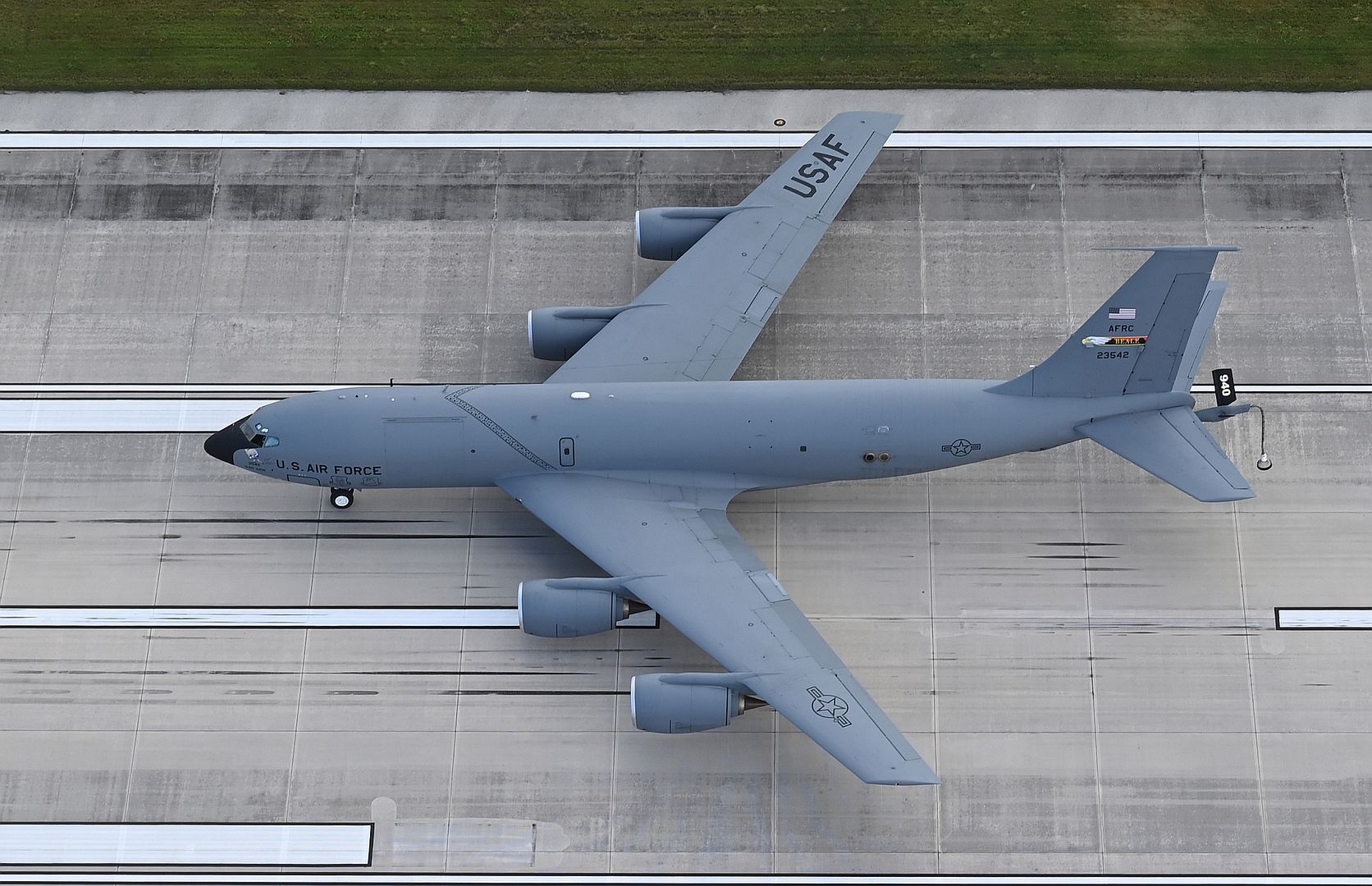
A U.S. Air Force Airman prepares to marshall an F-15E Strike Eagle for take off at RAF Lakenheath, England, Feb. 6, 2024. The Liberty Wing conducts daily flight operations to maintain mission readiness. (U.S. Air Force photo by Airman 1st Class Alexander Vasquez)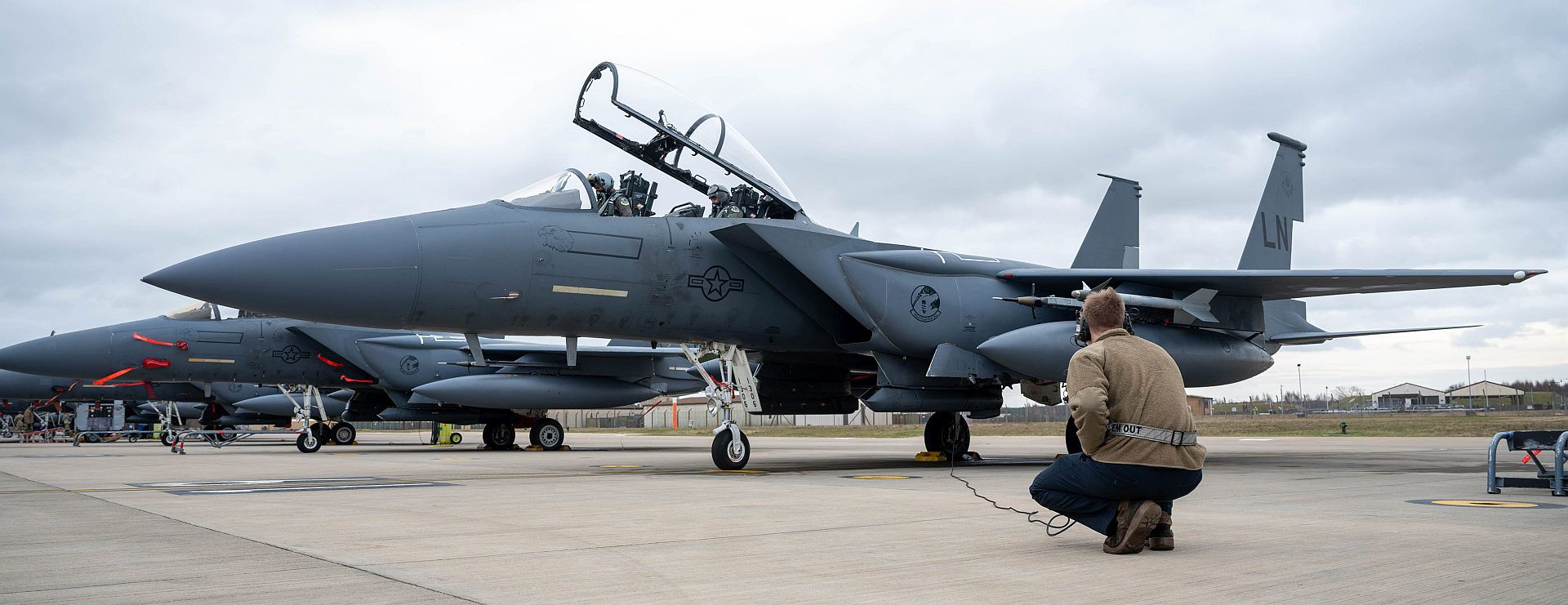
PACIFIC OCEAN (Feb. 5, 2024) Sailors chock and chain an F-35C Lightning II, assigned to Marine Fighter Attack Squadron (VMFA) 314, on the flight deck of the Nimitz-class aircraft carrier USS Abraham Lincoln (CVN 72). The Abraham Lincoln Carrier Strike Group is underway in the U.S. 3rd Fleet area of operations conducting advanced tactical training that increases warfighting capability and tactical proficiency across all domains. (U.S. Navy photo by Mass Communication Specialist 2nd Class Clayton A. Wren)_314_on_the_flight_deck_of_the_Nimitz-class_aircraft_carrier_USS_Abraham_Lincoln.jpg?width=1920&height=1080&fit=bounds)
A F-22 Raptor assigned to the 525th Expeditionary Fighter Squadron, 3rd Air Expeditionary Wing, Joint Base Elmendorf-Richardson, Alaska, lands on Naval Air Station North Island, California during exercise Bamboo Eagle Jan. 30, 2024. BE 24-1 exercised Integrated Defense, ensuring members could act smoothly and decisively in both a Joint environment as well as a multilateral one. Exercises such as BE 24-1 are made increasingly difficult and complicated to continuously evolve and improve units’ readiness. (U.S. Air Force photo by Airman 1st Class Moises Vasquez)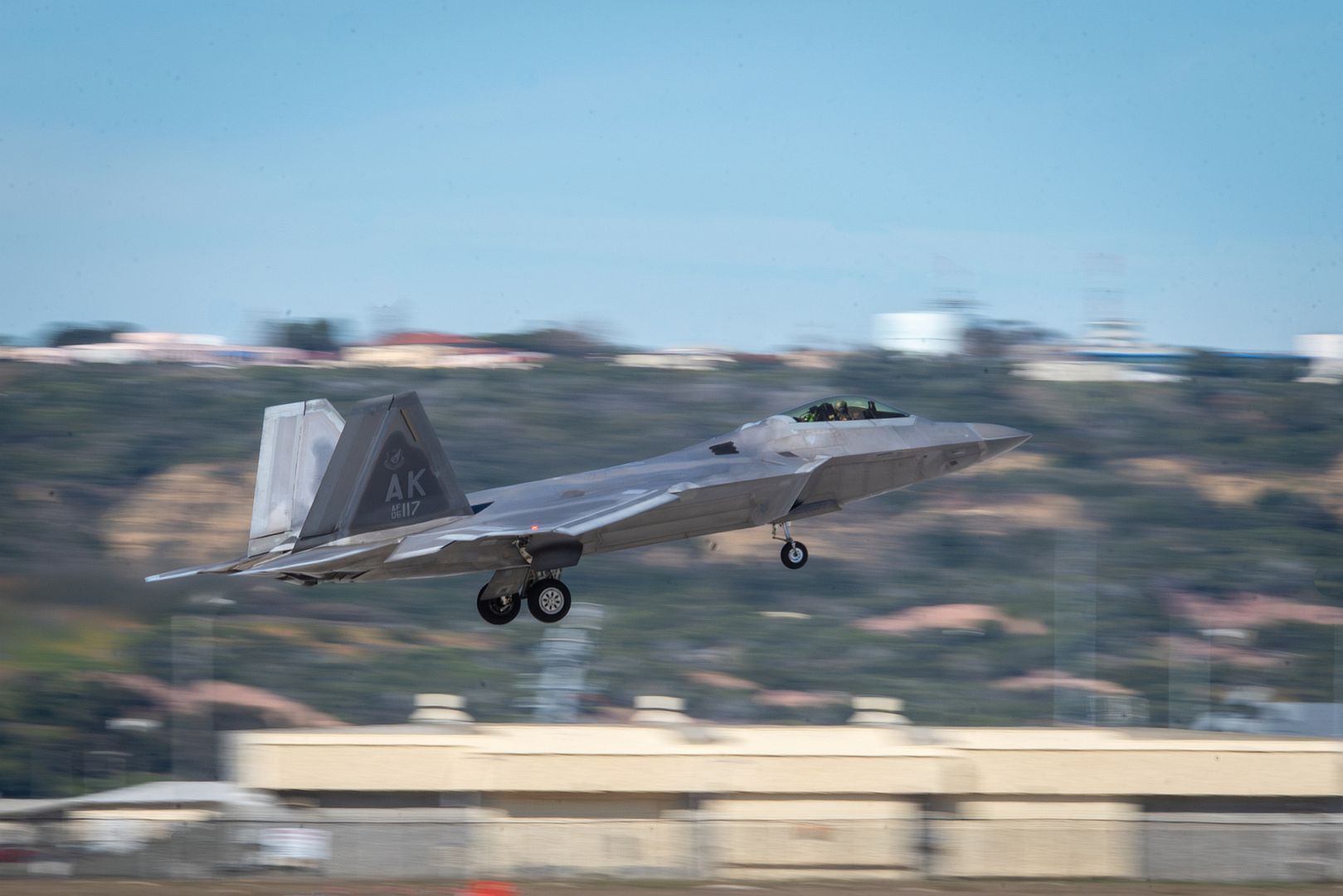
A U.S. Air Force F-16C Fighting Falcon assigned to the 79th Fighter Squadron (FS) sits ready on the flightline at March Air Reserve Base, California, during Bamboo Eagle (BE) 24-1, Jan. 30, 2024. The 20th Security Forces Squadron ensured the safety of 79th FS aircraft during BE 24-1 to ensure pilots can safely and effectively meet training requirements. (U.S. Air Force photo by Senior Airman Steven Cardo)_sits_ready_on_the_flightline_at_March_Air_Reserve_Base_California_during_Bamboo_Eagle.jpg?width=1920&height=1080&fit=bounds)
OWEGO, N.Y., Feb. 7, 2024 – Sikorsky, a Lockheed Martin company, (NYSE: LMT) has completed testing of the integrated mission systems and sensors aboard three MH-60R SEAHAWK® helicopters purchased by the Hellenic Navy.
Completed in early December 2023, the tests verify each MH-60R aircraft is an efficient and effective air weapon system capable of performing anti-submarine and anti-surface warfare missions from land or naval ship.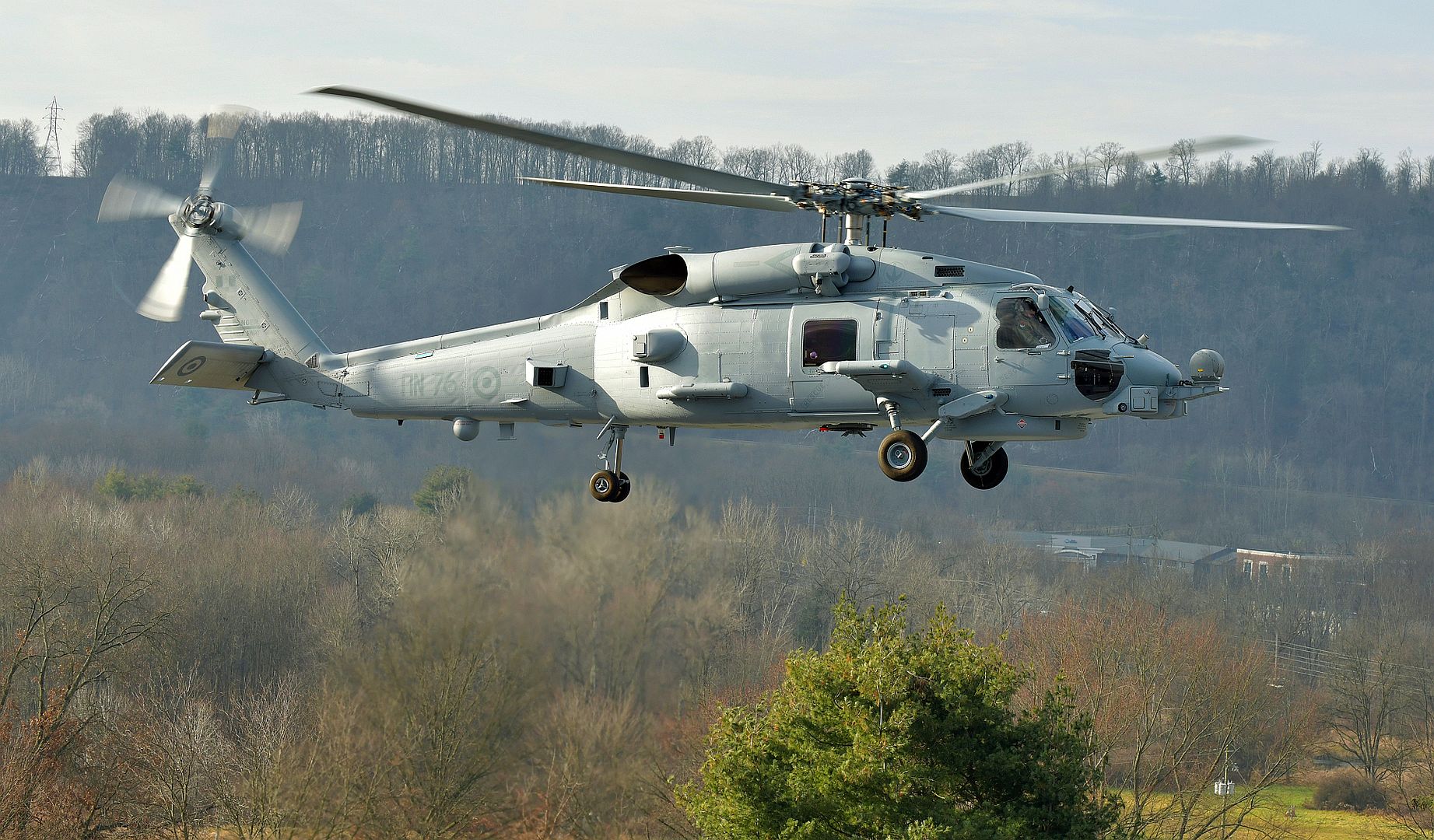
“Commonality of these Hellenic Navy MH-60R SEAHAWK aircraft with 330 MH-60R and 250 MH-60S SEAHAWK aircraft, and with the global BLACK HAWK helicopter fleet, enables Sikorsky and the U.S. Navy to continue sustaining and upgrading this proven weapon system for maximum threat deterrence and operational capability,” said Sikorsky President Paul Lemmo.
Greece is the seventh country to receive the U.S. Navy’s MH-60R maritime helicopter. In Europe, Denmark operates nine MH-60R aircraft. Spain and Norway placed orders in 2023 for a combined 14 MH-60R aircraft.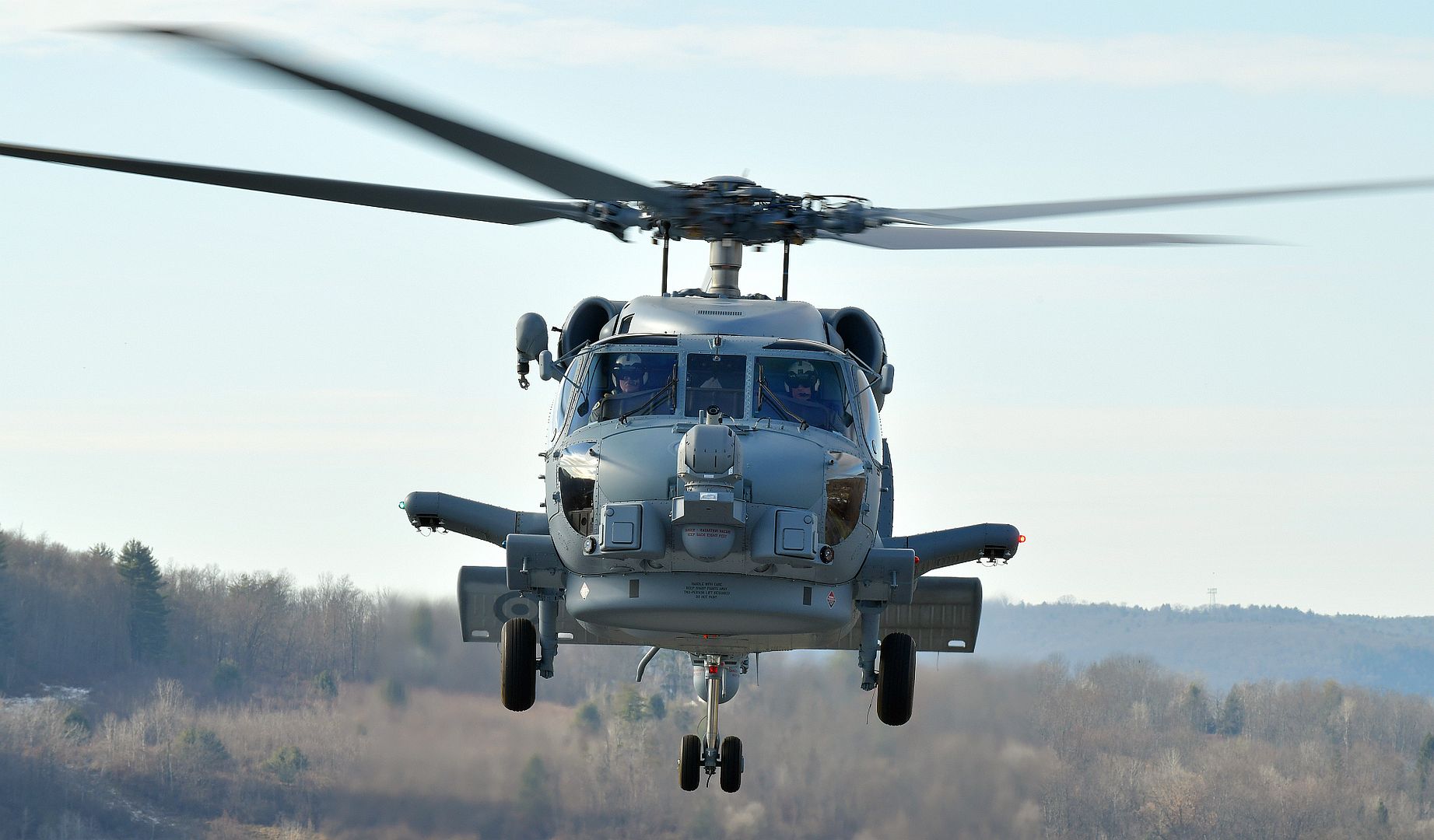
Arrival in Greece
The first three MH-60R aircraft will arrive in Greece during 2024 aboard U.S. Navy transport planes. Four additional aircraft will arrive in 2025 to complete the Hellenic Navy’s seven-aircraft purchase.
Hellenic Navy MH-60R aircraft will join 11 existing S-70B SEAHAWK aircraft at the Kotroni Naval Air Station. Known as Aegean Hawks, the older maritime helicopters were acquired direct from Sikorsky between 1994 and 2005.
For more information about the MH-60R helicopter, visit our website: lockheedmartin.com/mh-60.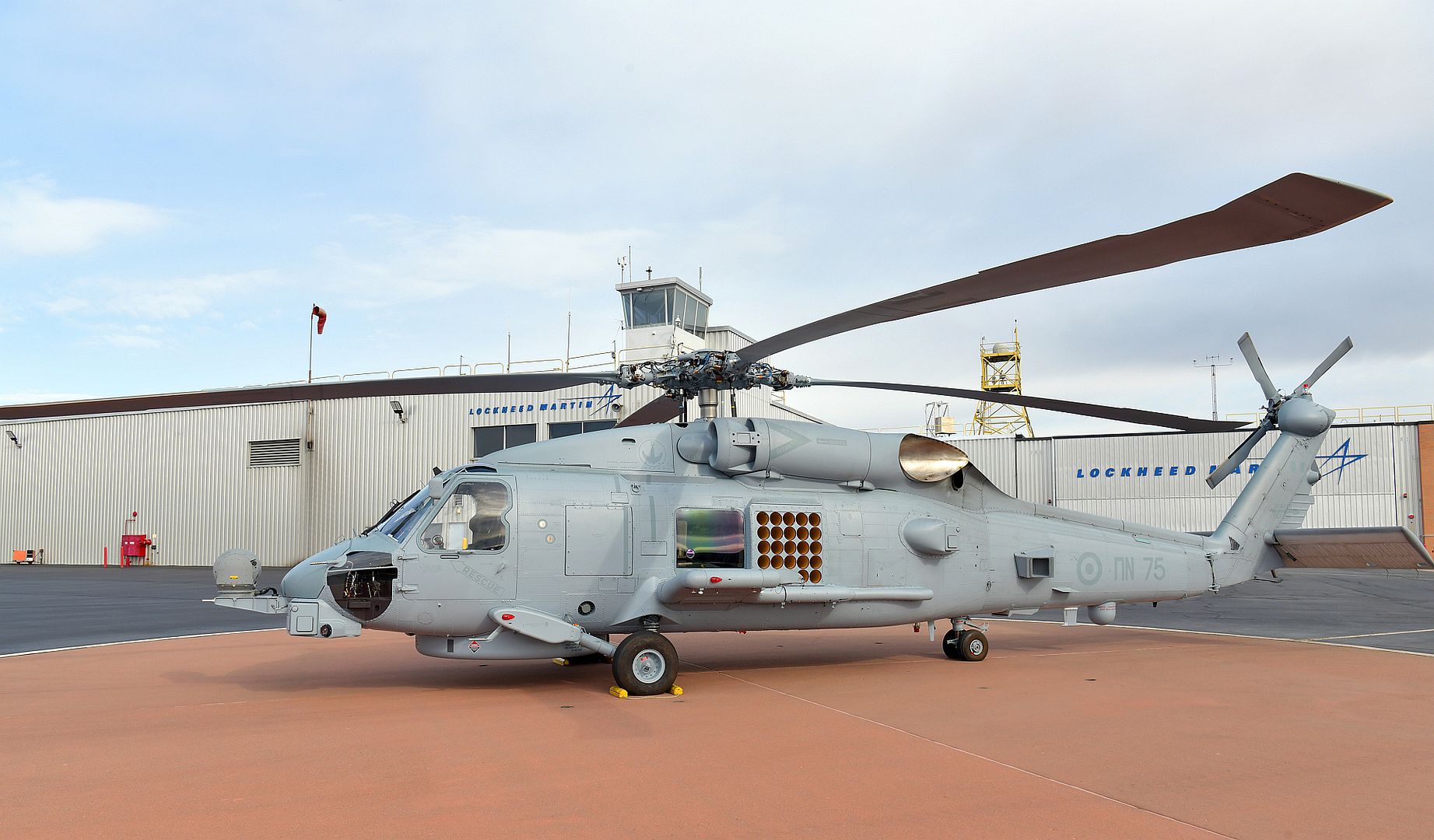
-
1 year agoThu Feb 08 2024, 08:51pmDuggy
 Main AdminCrew chiefs assigned to the 442nd Aircraft Maintenance Squadron perform a post flight inspection on an A-10C Thunderbolt II assigned to the 303rd Fighter Squadron, Whiteman Air Force Base, Missouri, at MacDill AFB, Florida, Feb. 6, 2024. The Thunderbolt II can employ a variety of conventional munitions including general purpose bombs, cluster bomb units, laser guided bombs and joint direct attack munitions. The A-10 utilizes the GAU-8/A 30mm cannon, capable of firing 3,900 rounds per minute to defeat a wide variety of targets including tanks. (U.S. Air Force photo by Senior Airman Zachary Foster)
Main AdminCrew chiefs assigned to the 442nd Aircraft Maintenance Squadron perform a post flight inspection on an A-10C Thunderbolt II assigned to the 303rd Fighter Squadron, Whiteman Air Force Base, Missouri, at MacDill AFB, Florida, Feb. 6, 2024. The Thunderbolt II can employ a variety of conventional munitions including general purpose bombs, cluster bomb units, laser guided bombs and joint direct attack munitions. The A-10 utilizes the GAU-8/A 30mm cannon, capable of firing 3,900 rounds per minute to defeat a wide variety of targets including tanks. (U.S. Air Force photo by Senior Airman Zachary Foster)
U.S. Air Force F-16CM participates in Cope North 24 over Tinian and Saipan, Feb. 6, 2024. Through exchanging information and improving shared tactics to better integrate multilateral defense capabilities, Cope North strengthens U.S. partnerships and interoperability with its regional Allies and partners. (U.S. Air Force photo by Airman 1st Class Alyssa Bankston)
U.S. Air Force F-16CM, USAF F-15C, JASDF F-2 and a U.S. Marine Corps F/A-18 Hornet fly next to USAF B-52H Stratofortress over Tinian and Saipan during Cope North 24, Feb. 6, 2024. Cope North allows participants to exercise interoperability through agile combat employment and integrated generation of airpower from dispersed locations across the Indo-Pacific. (U.S. Air Force photo by Airman 1st Class Alyssa Bankston)
A U.S. Air Force F-16 Fighting Falcon from the 79th Fighter Squadron, Shaw Air Force Base, South Carolina, lands at March Air Reserve Base, California for Exercise Bamboo Eagle, Jan. 27, 2024. Approximately 3,000 U.S. service members across four branches, and 300 members of the Royal Air Force and the Royal Australian Air Force participated in the exercise. (U.S. Air Force photos by Staff Sgt. Micah Coate)

A Japan Air Self-Defense Force F-2 takes off from Hyakuri Air Base, Japan in support of the Aviation Training Relocation exercise Jan. 29, 2024. This exercise, part of the ongoing ATR program, highlights the deepening cooperation between the U.S. and Japan, enhancing interoperability and readiness for real-world contingencies. (U.S. Air Force Photo by Staff Sgt. Kristen Heller)
Media Release 08.02.2024.
The New South Wales Ambulance Fixed Wing Aeromedical Operations brings its first PC-24 into service, demonstrating how this aircraft continues to live up to its namesake as the world’s only Super Versatile Jet.
In 2021, Australia’s New South Wales Ambulance decided to purchase two state-ofthe- art PC-24s to further increase the organization’s operational capabilities. The operator will use the PC-24 to provide aeromedical services to the people of New South Wales, covering an area of approximately 800,000 square kilometers. It is anticipated that the Super Versatile Jet will conduct around 800 flights, transferring approximately 6,500 patients, during its first year of service.
“The PC-24 is no stranger to the aeromedical space, it’s a highly sought after platform for many of the top aeromedical organizations around the world. Like the aircraft, the aeromedical configuration has proven itself in some of the harshest operating conditions anywhere. We’re extremely proud that the New South Wales Ambulance has chosen our aircraft to save lives and serve their community”, said Pilatus Australia’s CEO, Sebastian Lip.
“The PC-24 increases the capability of our aeromedical operations and is ideal for the long distances we have to cover in Australia, it will be a great asset to our clinical staff and patients”, said NSW Ambulance Commissioner Dr Dominic Morgan.
About the PC-24 Air Ambulance
For the last 30 years Pilatus has been manufacturing and delivering aircraft to some of the most widely recognized and prestigious aeromedical operators around the world – including customers such as the Royal Flying Doctor Service in Australia, Ornge in Canada and Kommunalförbundet Svenskt Ambulansflyg (KSA) in Sweden. The PC-24 is the world’s first air ambulance jet with a patient loading door. Patients can be loaded and unloaded from the Super Versatile Jet by means of an electrically powered loading device or alternatively with a ramp – patient loading has never been safer, faster or easier.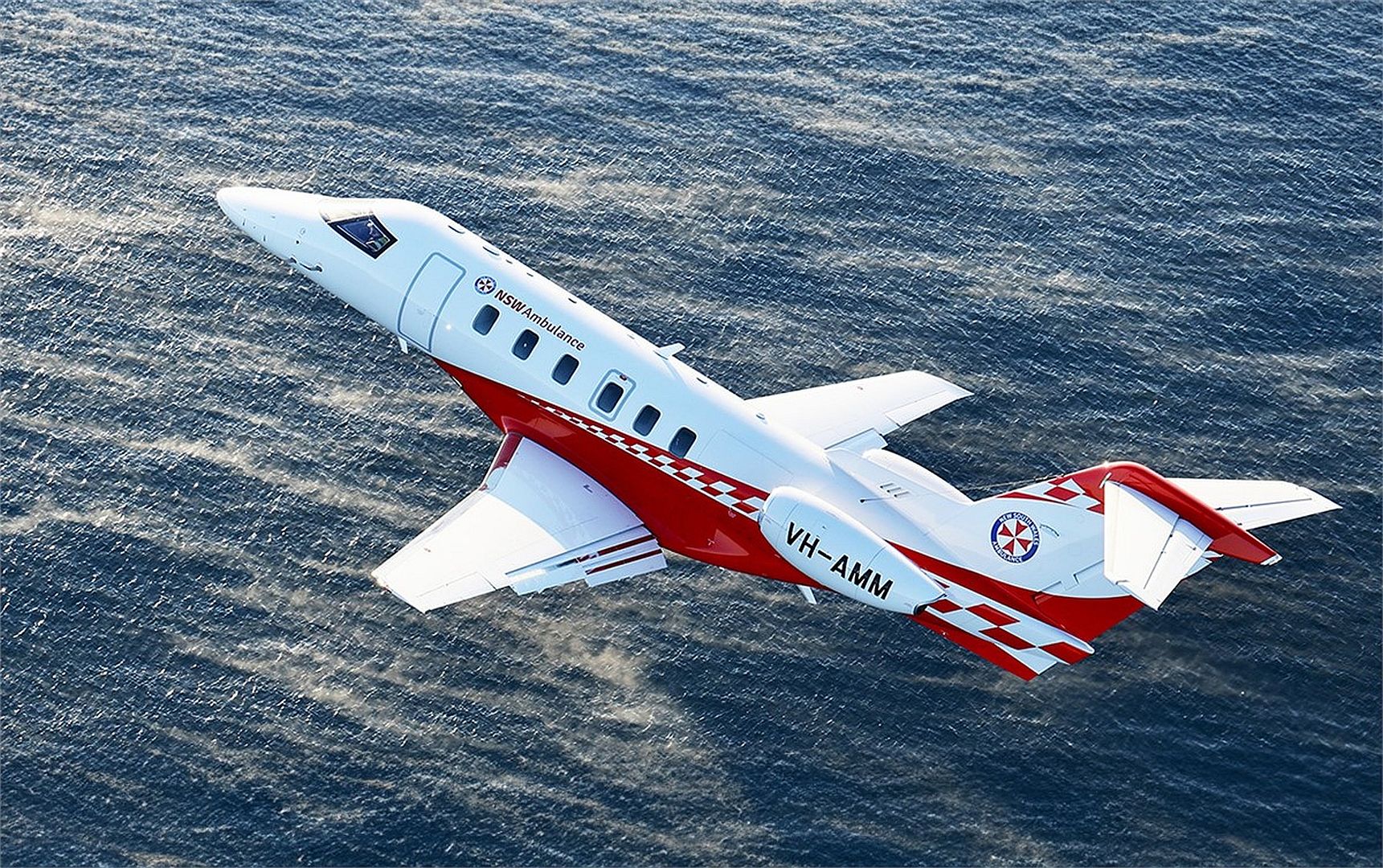
-
1 year agoFri Feb 09 2024, 09:58pmDuggy
 Main AdminA U.S. Air Force B-2 Spirit stealth bomber lands after a sortie at Whiteman Air Force Base, Mo, Feb. 7, 2024. These sorties allow crews to maintain preparedness. (U.S. Air Force photo by Senior Airman Bryson Britt)
Main AdminA U.S. Air Force B-2 Spirit stealth bomber lands after a sortie at Whiteman Air Force Base, Mo, Feb. 7, 2024. These sorties allow crews to maintain preparedness. (U.S. Air Force photo by Senior Airman Bryson Britt)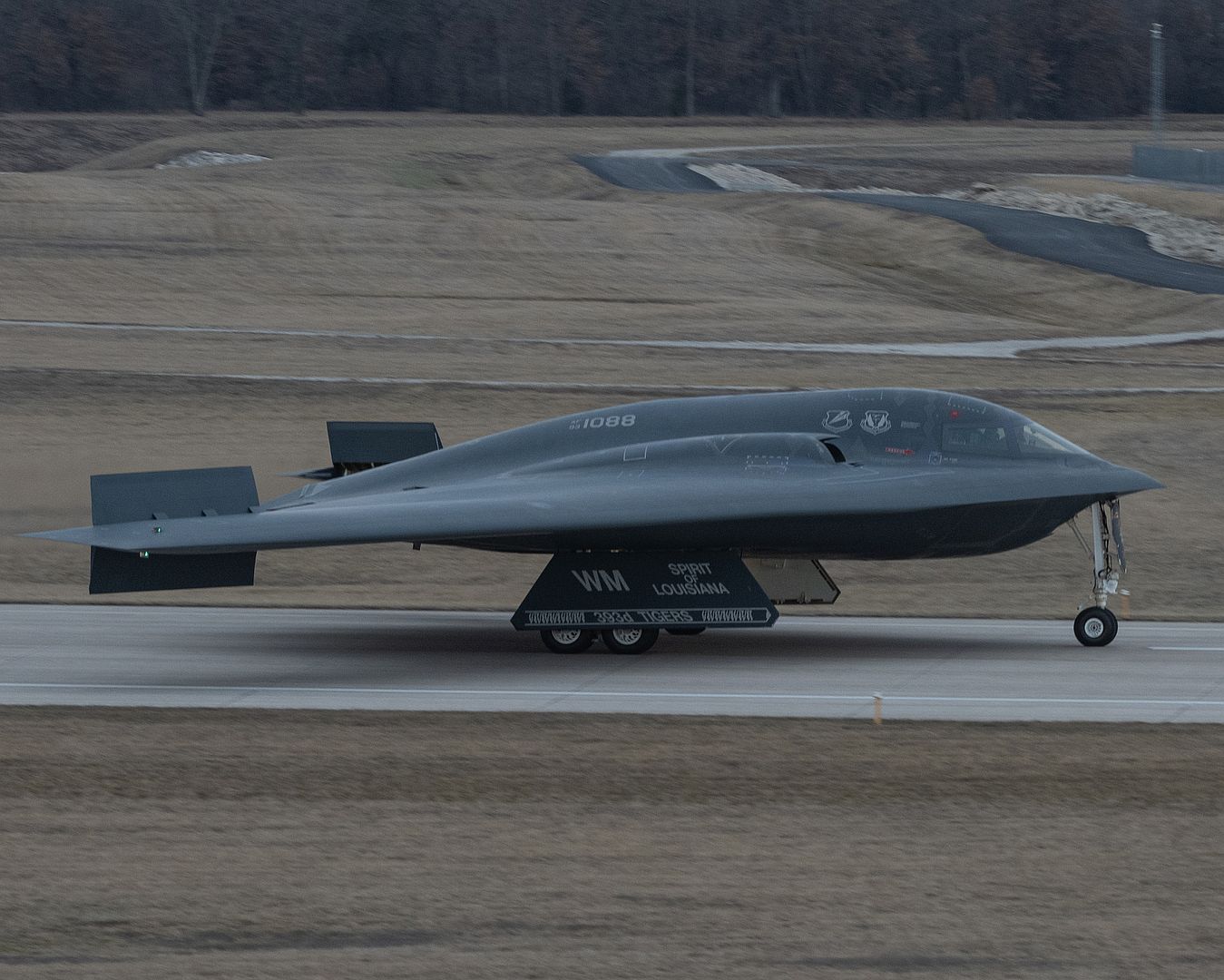
PACIFIC OCEAN (Feb. 7, 2024) An F/A-18E Super Hornet, assigned to Strike Fighter Squadron (VFA) 151, makes an arrested landing on the flight deck of the Nimitz-class aircraft carrier USS Abraham Lincoln (CVN 72). The Abraham Lincoln Carrier Strike Group is underway in the U.S. 3rd Fleet area of operations conducting advanced tactical training that increases warfighting capability and tactical proficiency across all domains. (U.S. Navy photo by Mass Communication Specialist 2nd Class Clayton A. Wren)_151_makes_an_arrested_landing_on_the_flight_deck_of_the_Nimitz-class_aircraft_carrier_USS_Abraham_Lincoln.jpg?width=1920&height=1080&fit=bounds)
A U.S. Air Force B-52H Stratofortress assigned to the 23rd Expeditionary Bomb Squadron takes flight as part of a multinational formation over Guam, Feb. 6, 2024. The United States does not fight alone, nor do we deter alone. Our relationships and increased operational capabilities with allies and partners are vital to preserving a free and open Indo-Pacific. (U.S. Air Force photos by Master Sgt. Amy Picard)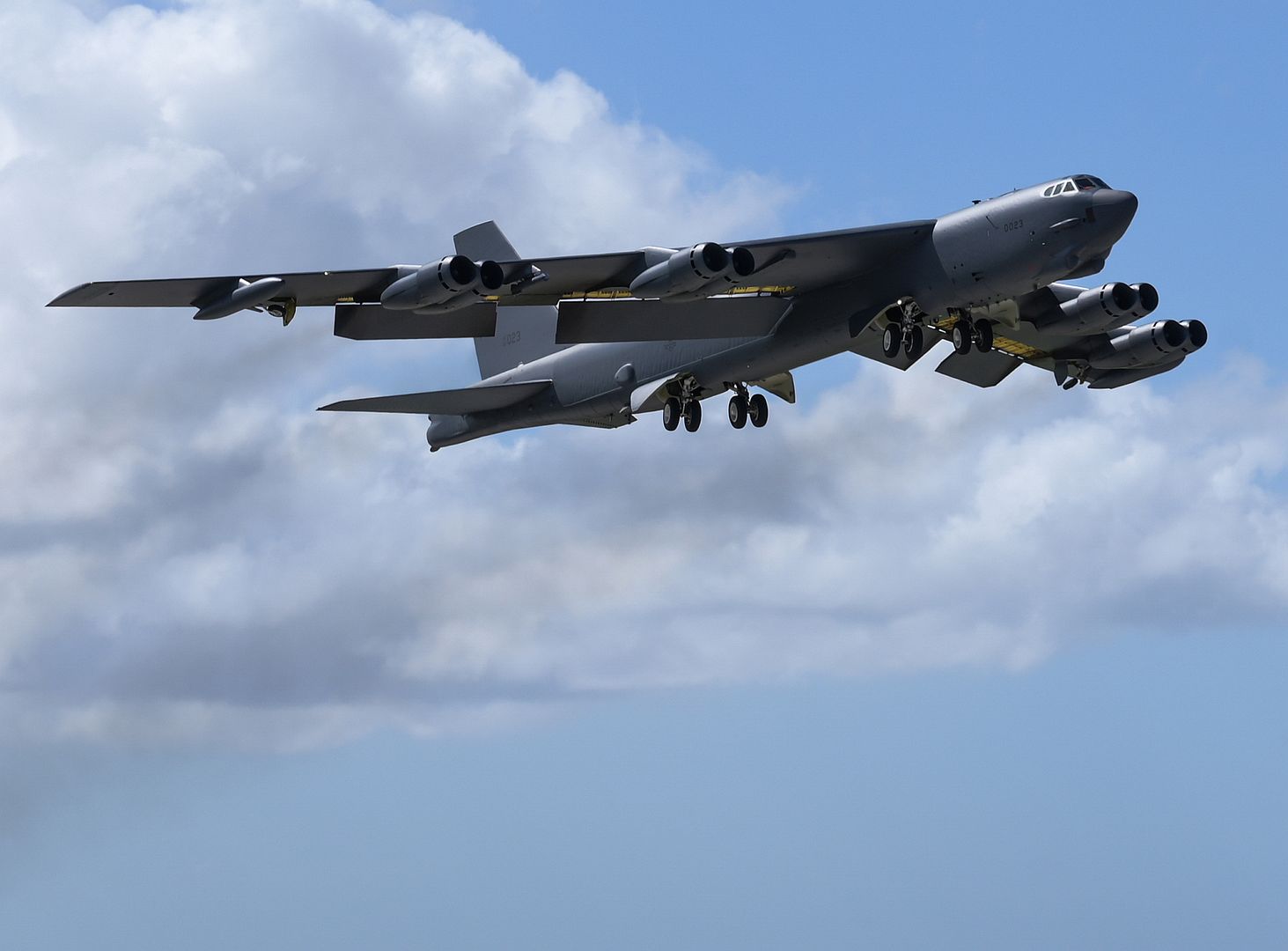

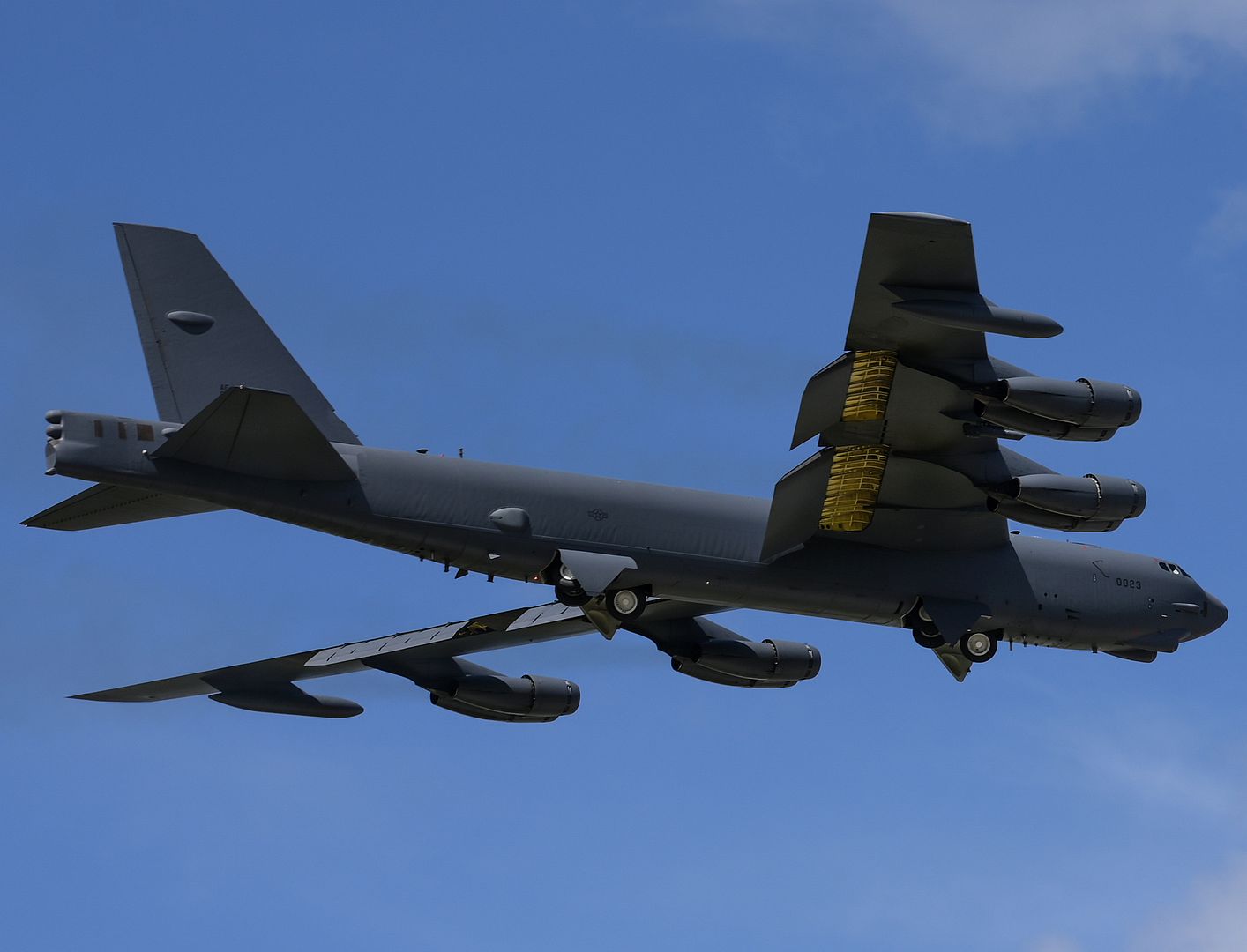
02.09.2024
The 187th Fighter Wing unveiled the new Alabama Air National Guard’s F-35 Lightning II fighter jet during an event at Dannelly Field, Alabama, today. The red tails are a historic tribute to the Tuskegee Red Tails, the famed WWII squadron, which lives on as the 100th Fighter Squadron within the wing. “The red tail you will see is a reminder to all that through excellence we will overcome any obstacle and threat regardless of gender, race, or religion, “ said Col. Brian Vaughn, the wing’s commander, during the ceremony. “We are all here for the same mission: to protect our nation, defend our constitution, and to form a more perfect union as the Tuskegee Airmen did.” (U.S. Air Force photo by Tech. Sgt. William Blankenship)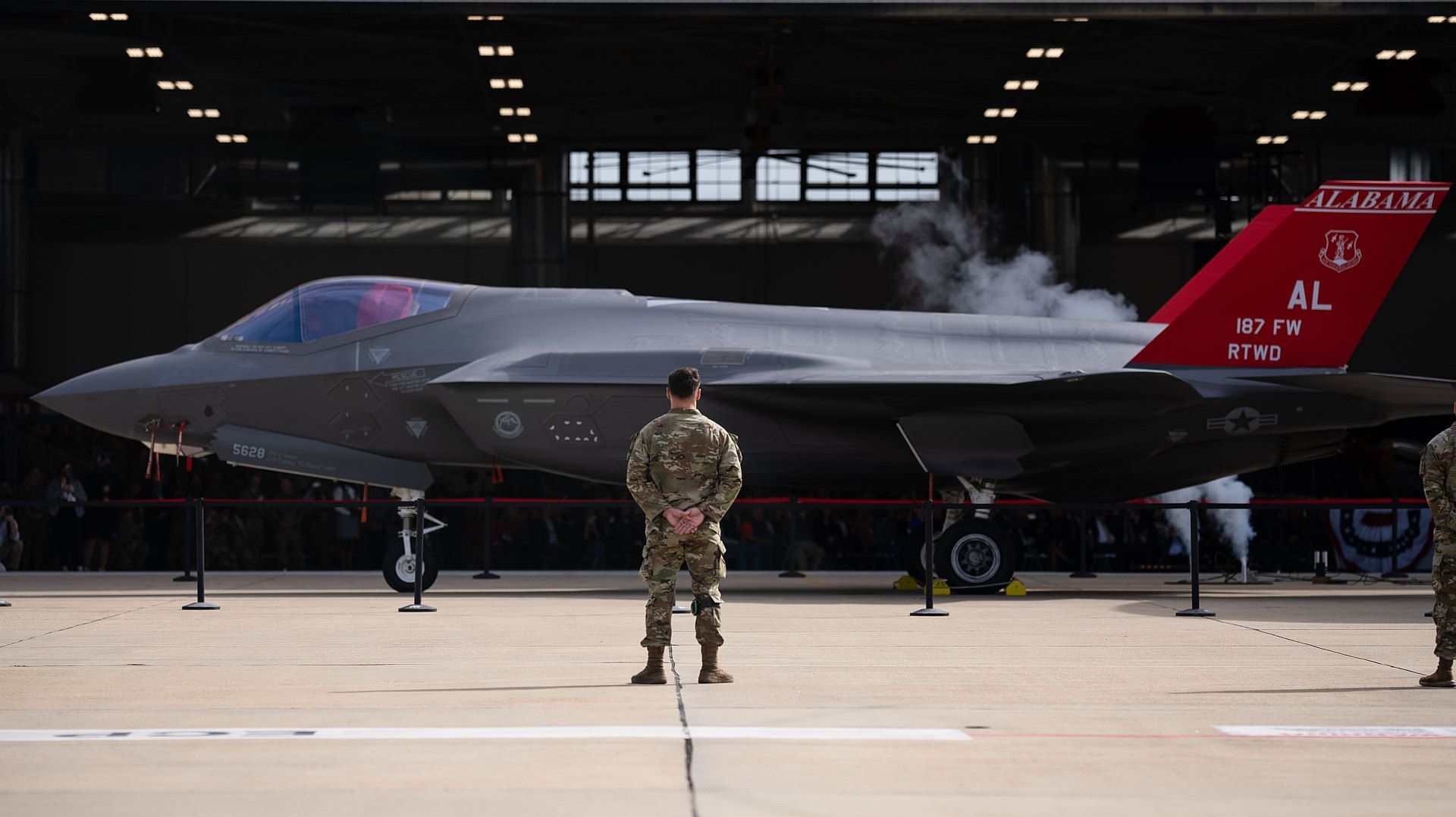
The first C-390 Millennium of the Hungarian Air Force has successfully completed its maiden flight yesterday in Gavião Peixoto. Embraer Defense & Security team flew the aircraft for approximately 4 hours, carrying out a complete assessment of the aircraft, which will now undergo a test campaign ahead of the entry into service with the Hungarian Air Force.
“This maiden flight is a major milestone for the Hungarian C-390 program. The C-390 Millennium is receiving international recognition on the back of its remarkable operational performance and capabilities, and Embraer is ramping up production to address increasing market demand. It is an honor to work with the Hungarian Defence Forces in strengthening their capabilities with the best military airlift solution available. We are keen in further deepening this partnership with the Hungarian Defence Forces, and supporting them well into the future,” said Bosco da Costa Junior, President and CEO of Embraer Defense & Security..jpg?width=1920&height=1080&fit=bounds)
Since entering service with the Brazilian Air Force in 2019, and more recently with the Portuguese Air Force in 2023, the C-390 has proven its capacity, reliability and performance. The current fleet of aircraft in operation has accumulated more than 11,500 flight hours, with operational availability of around 80% and mission completion rates above 99%, demonstrating exceptional productivity in the category..jpg?width=1920&height=1080&fit=bounds)
Post a reply
- Go to Previous topic
- Go to Next topic
- Go to Welcome
- Go to Introduce Yourself
- Go to General Discussion
- Go to Screenshots, Images and Videos
- Go to Off topic
- Go to Works in Progress
- Go to Skinning Tips / Tutorials
- Go to Skin Requests
- Go to IJAAF Library
- Go to Luftwaffe Library
- Go to RAF Library
- Go to USAAF / USN Library
- Go to Misc Library
- Go to The Ops Room
- Go to Made in Germany
- Go to Campaigns and Missions
- Go to Works in Progress
- Go to Juri's Air-Raid Shelter
- Go to Campaigns and Missions
- Go to Works in Progress
- Go to Skinpacks
- Go to External Projects Discussion
- Go to Books & Resources
